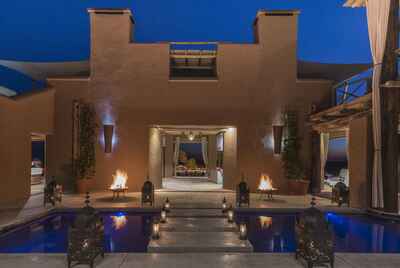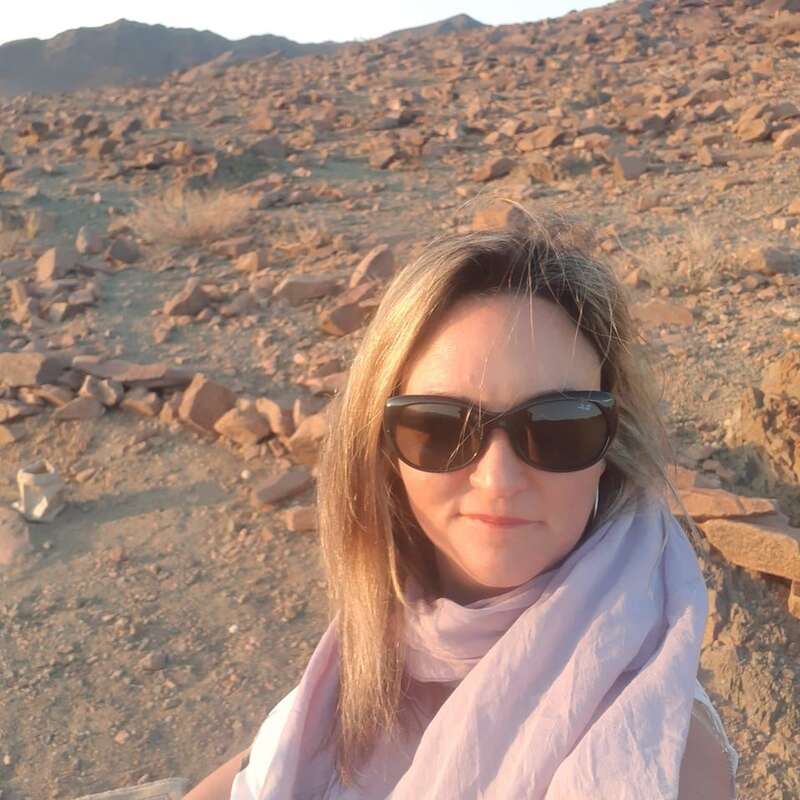About Onguma The Fort
A highly original interpretation of a safari lodge, exuding elegance and style, The Fort is reminiscent of a Moroccan casbah.
High walls and turrets set the scene, then the Moroccan theme continues through ornately carved and studded wooden doors, and on into the rooms with their tadelakt floors, brass-tray bedside tables and north African chandeliers. It’s not your everyday sight in the middle of the bush.
From its secluded location on the private Onguma Reserve, the lodge looks out towards Fischer’s Pan, and is superbly placed for exploring the wildlife-rich Etosha National Park. Drive yourself or go with a guide and add layers of understanding to enrich your sightings.
Return for a cooling dip in the pool, or unwind with a massage in the seclusion of your turreted room. Suitably refreshed, head down to the wine cellar to select a suitable bottle to enjoy with your four-course dinner, a fusion of flavours from Africa north and south.
In the Herero language, Onguma means “the place you don’t want to leave”. Sipping a refreshing gin and tonic after a day in Etosha, as the sun sets behind springbok quenching their thirst at the floodlit waterhole, we’d have to agree.
Our view
Onguma The Fort offers a high standard of food and service in a beautifully designed camp that would be perfect for those wanting quality and luxury; this is a place to spoil yourself. However, note that it may not be right for you if you prefer understated tented camps. We enjoyed a wonderful stay here and could not rate the friendliness and helpfulness of the staff more highly. With its location close to the entrance gate of Etosha, it is also very convenient for driving yourself into the park, or for taking a guided trip with the lodge.
Accommodation
13 rooms
Children
Best for 13+
Open
All year
Activities

4WD Safari

Birdwatching

Guided walking safari

Private activities
Traveller reviews of Onguma The Fort
43 real, un-edited reviews from Expert Africa's travellers.
Arrived 28 Sep 2024, 2 nights
"Onguma The Fort review"
Overall rating: Excellent
Arrived 2 Oct 2024, 2 nights
"Onguma The Fort review"
Overall rating: Excellent
Arrived 19 Sep 2023, 2 nights
"Onguma The Fort review"
Overall rating: Excellent
Arrived 12 Sep 2023, 2 nights
"Onguma The Fort review"
Overall rating: Excellent
Arrived 4 Sep 2022, 2 nights
"What a place!!!!!!!!!!!!"
Overall rating: Excellent
Arrived 31 Jan 2022, 3 nights
"Onguma The Fort review"
Overall rating: Excellent
Arrived 22 Aug 2021, 2 nights
"Onguma The Fort review"
Overall rating: Excellent
Arrived 29 Oct 2020, 2 nights
"Lovely high end lodge"
Overall rating: Excellent
Arrived 20 Oct 2019, 2 nights
"The desert fort"
Overall rating: Excellent
Arrived 13 Aug 2019, 1 nights
"Onguma The Fort, 24 hours paradise"
Overall rating: Excellent
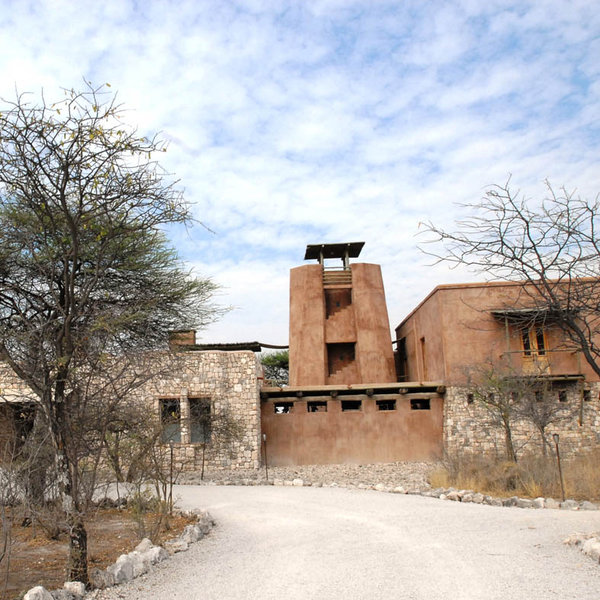
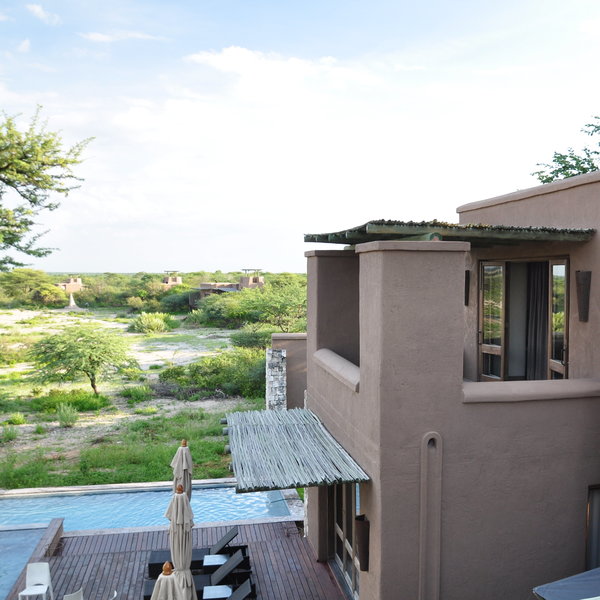
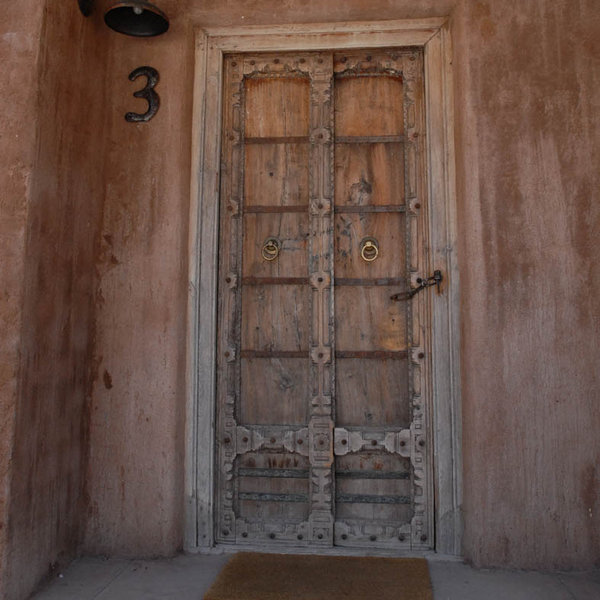
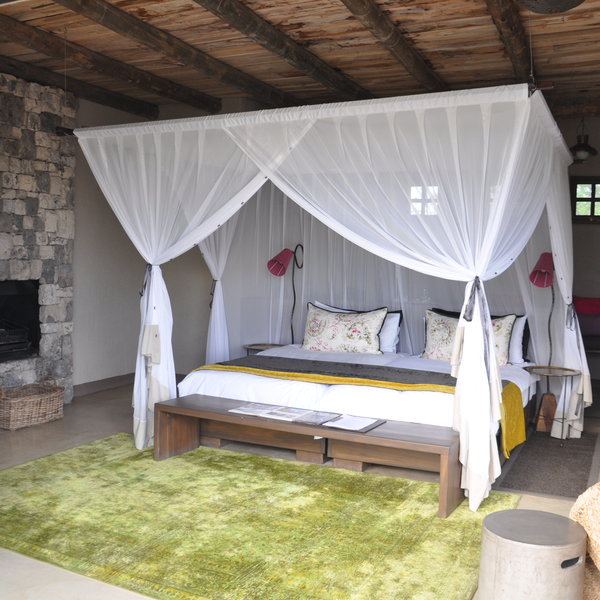
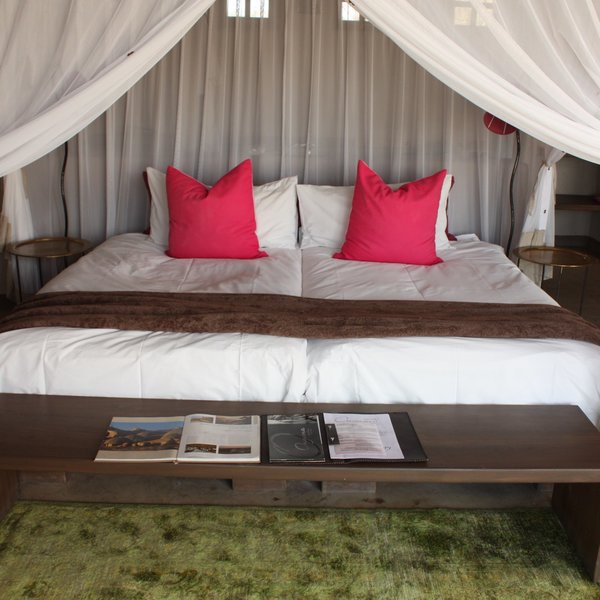
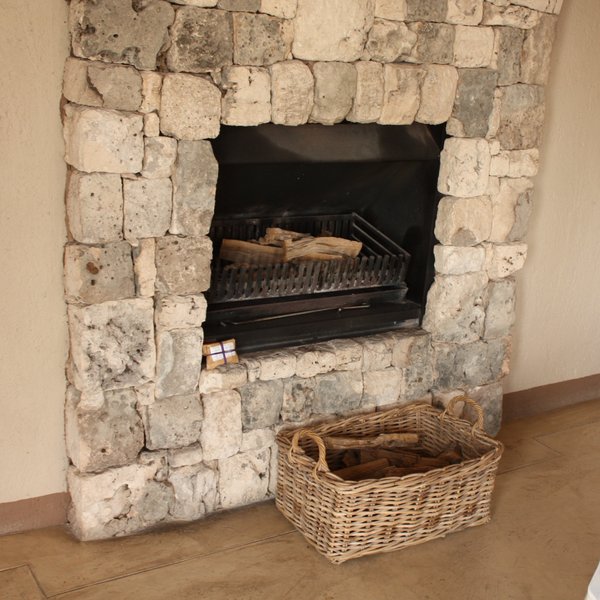
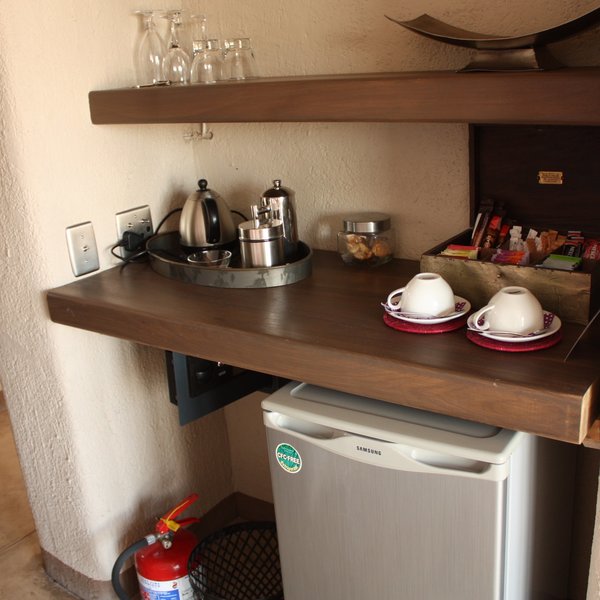
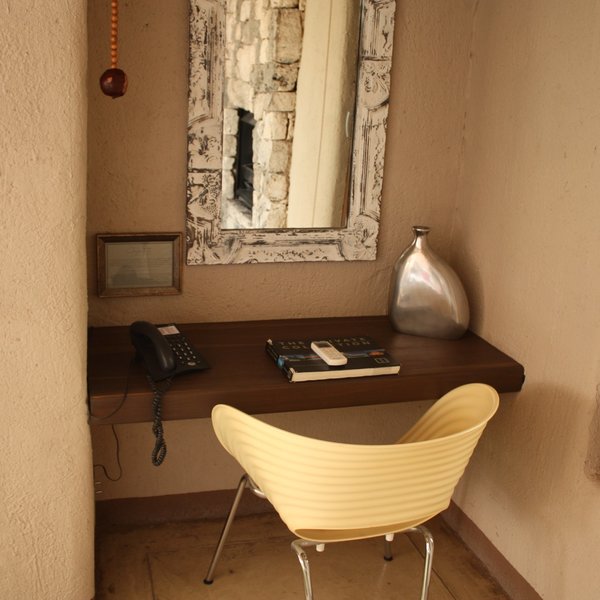
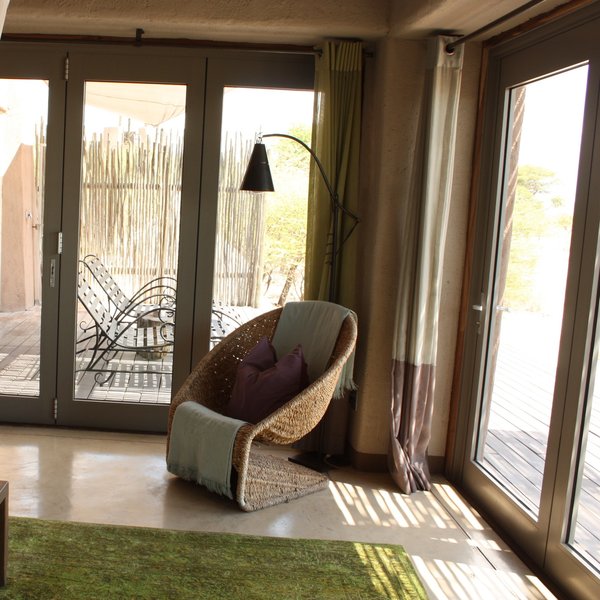
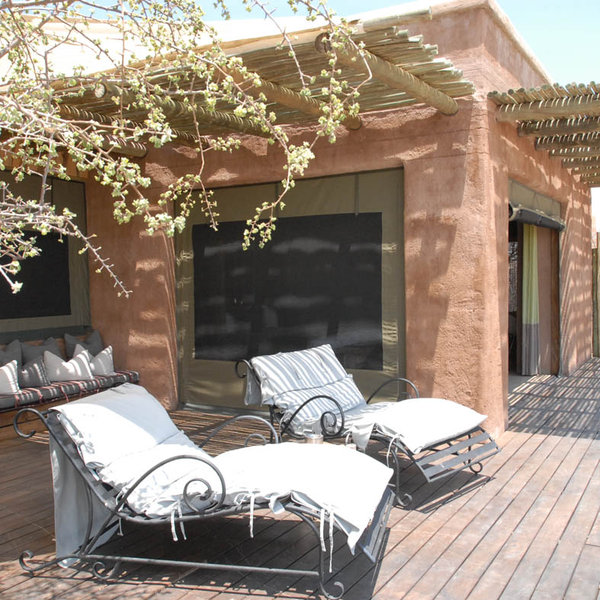
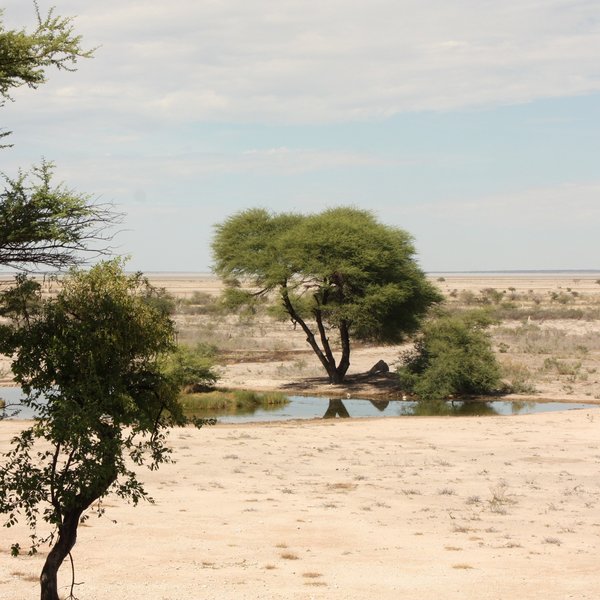
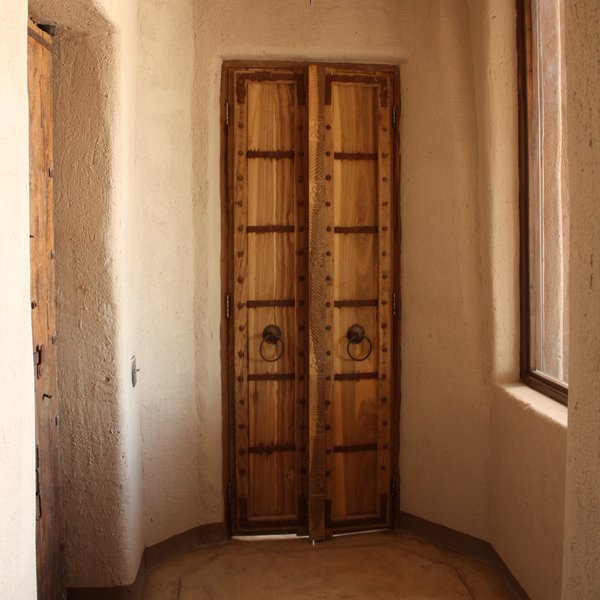
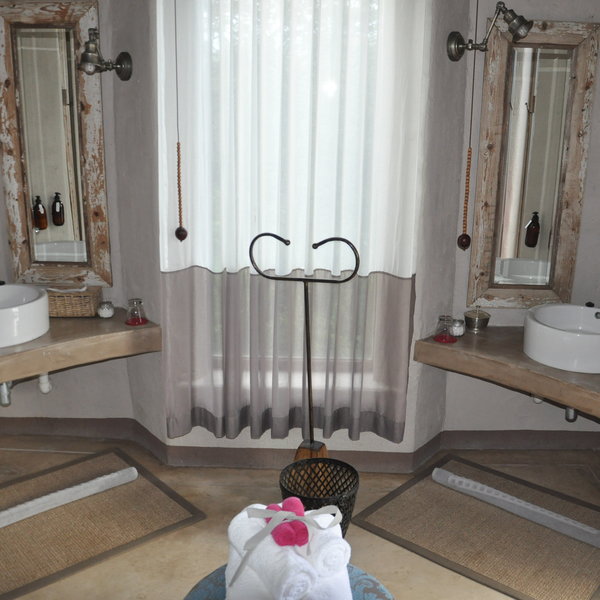
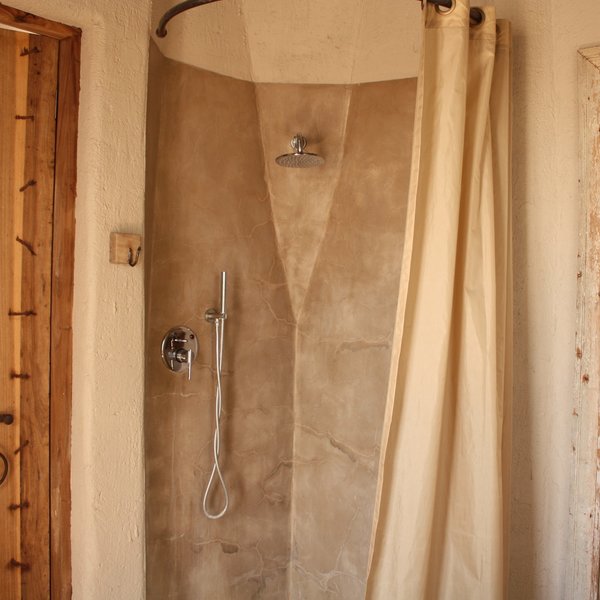
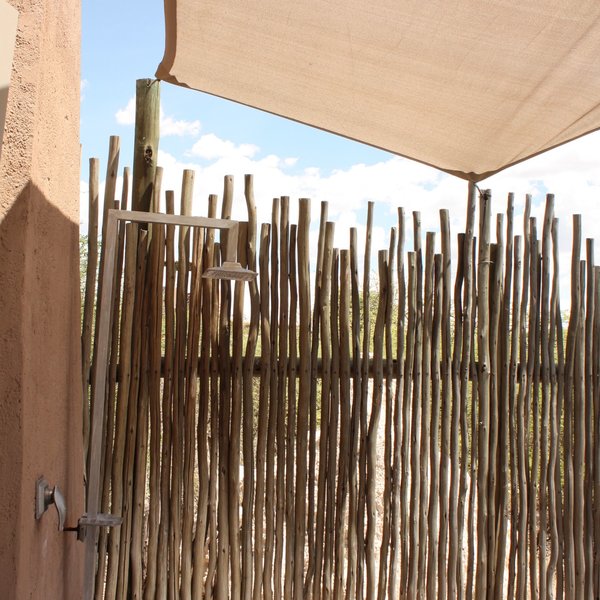
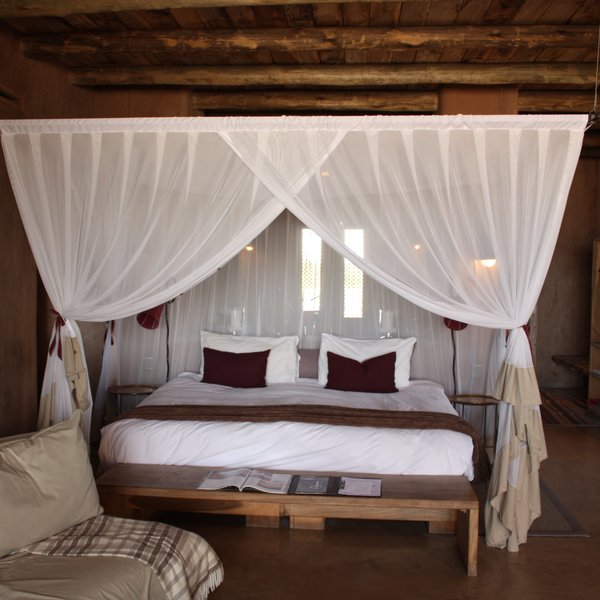
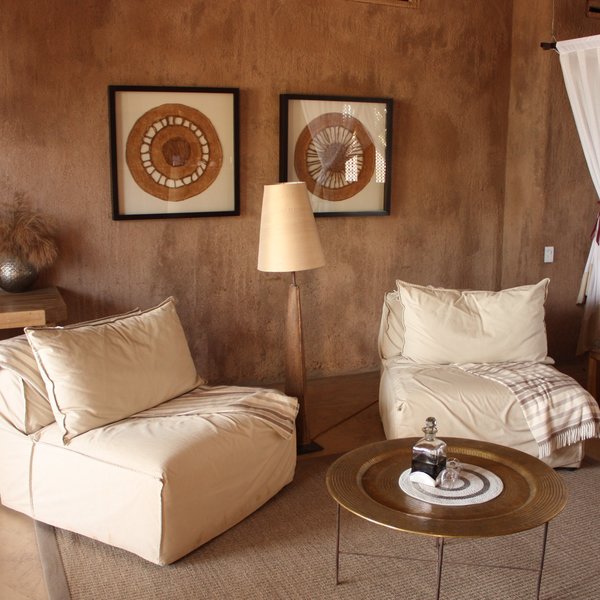
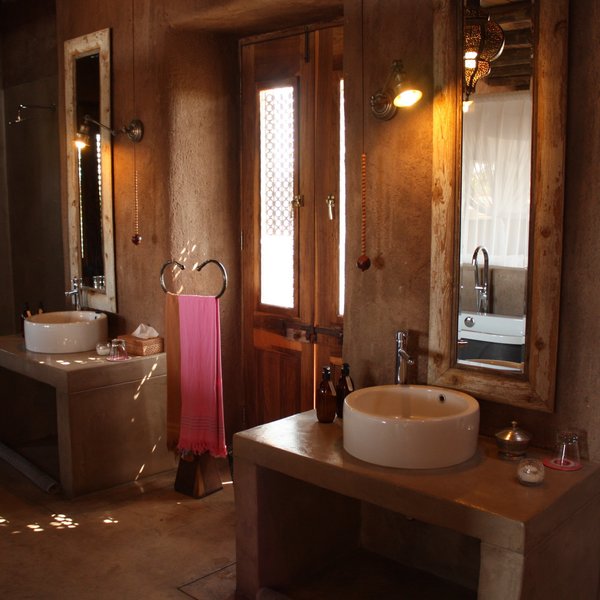
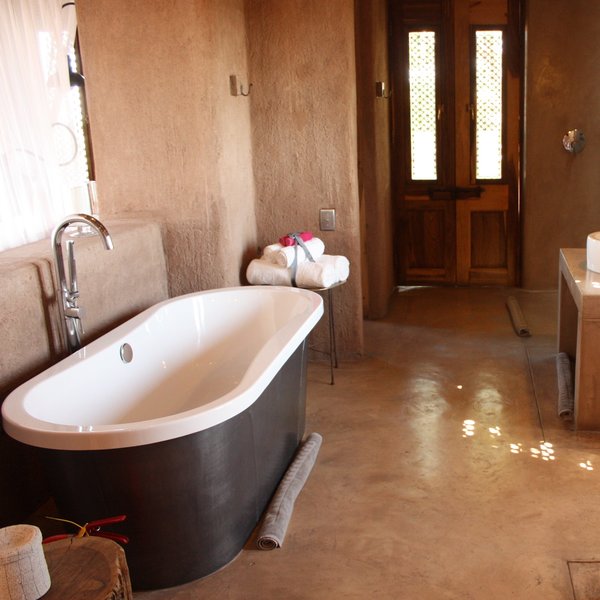
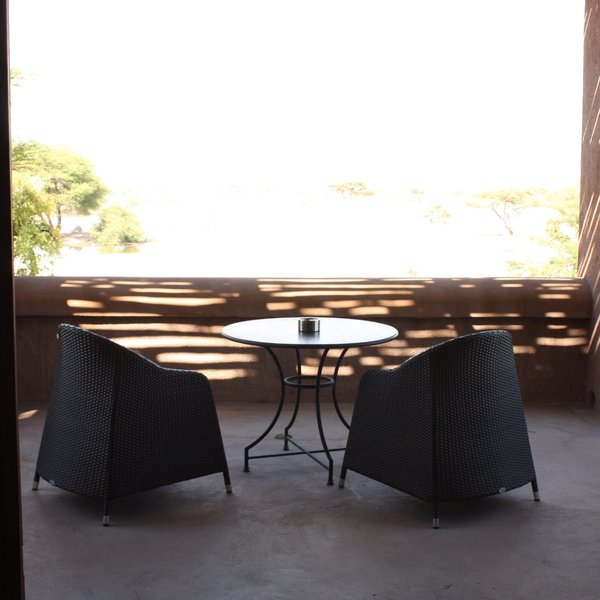
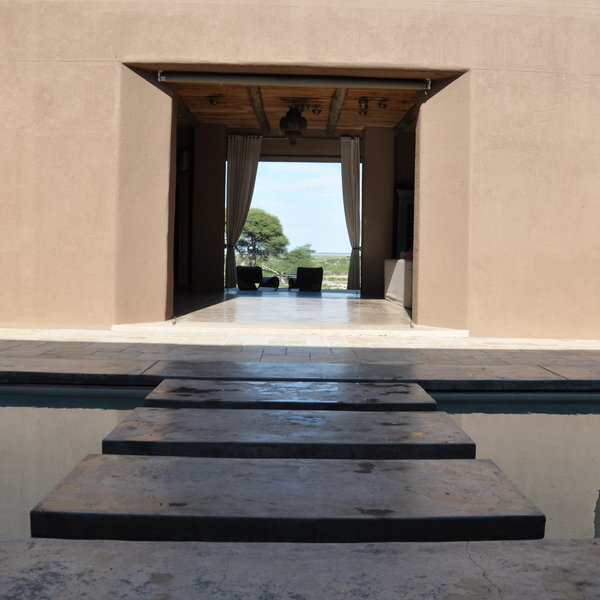
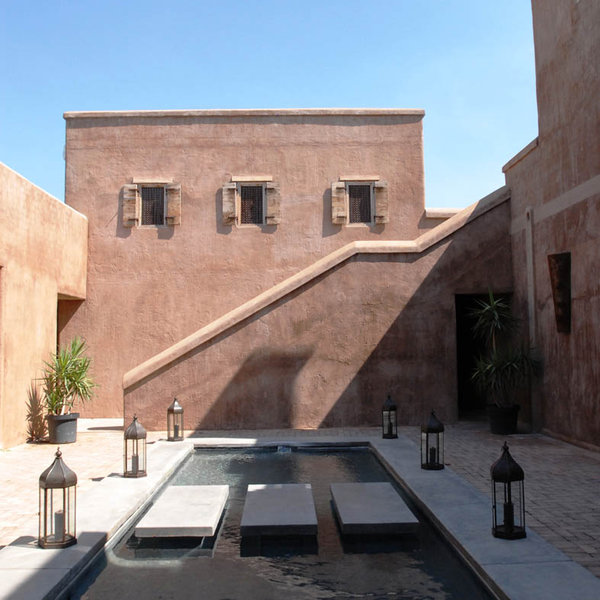
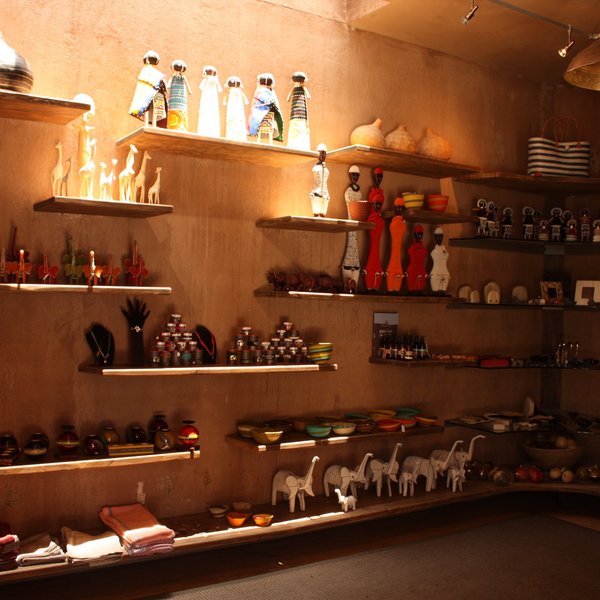
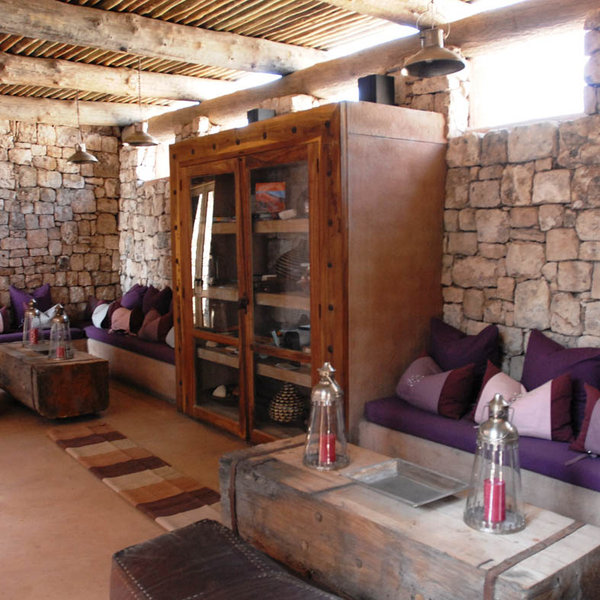
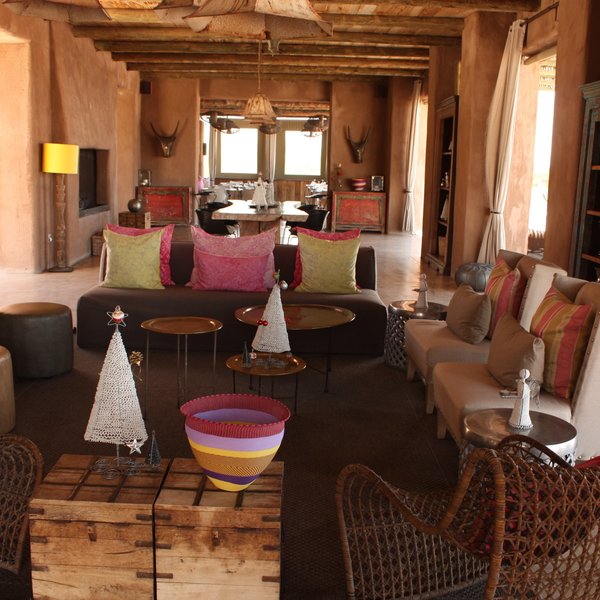
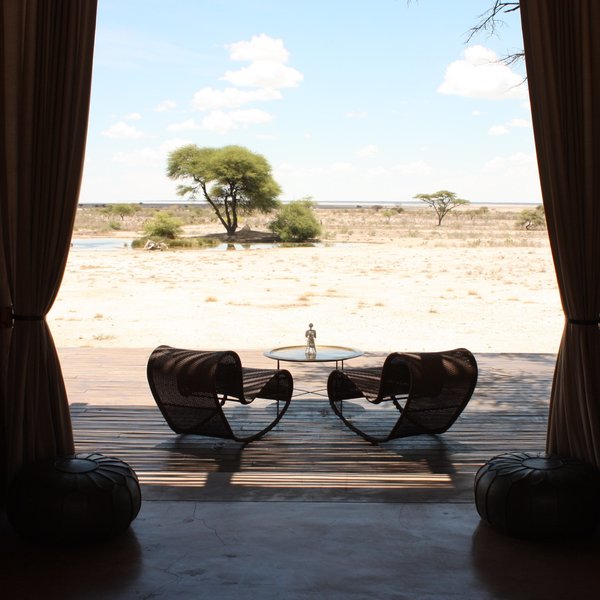
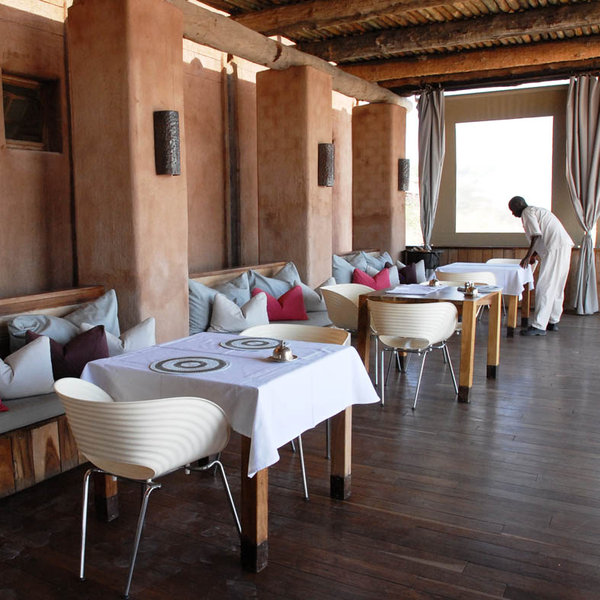
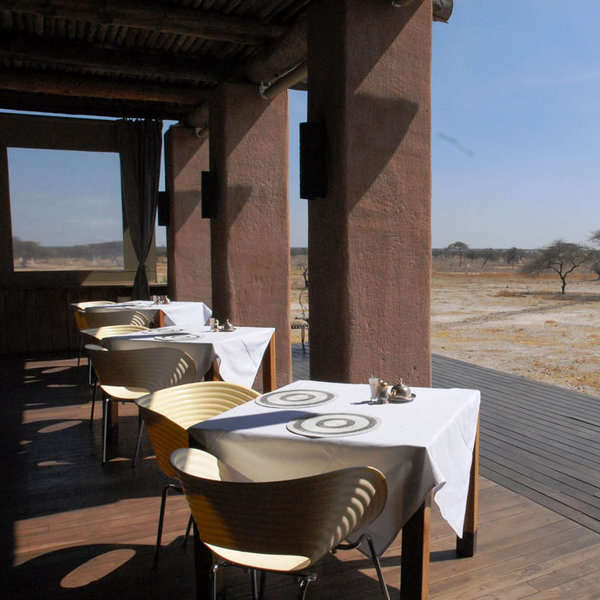
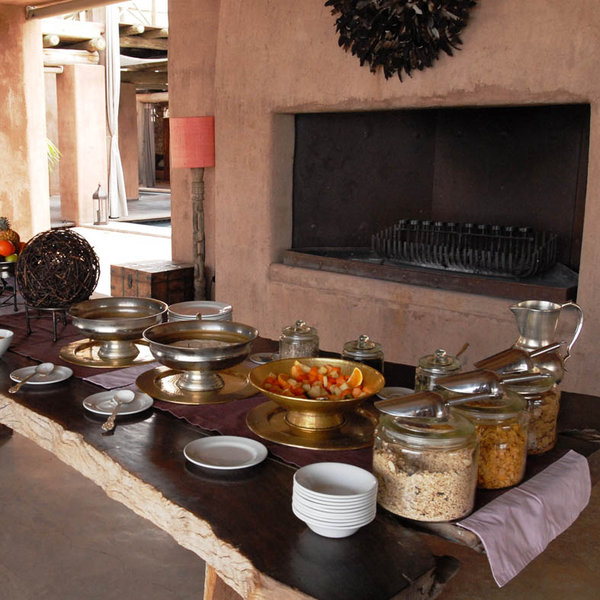
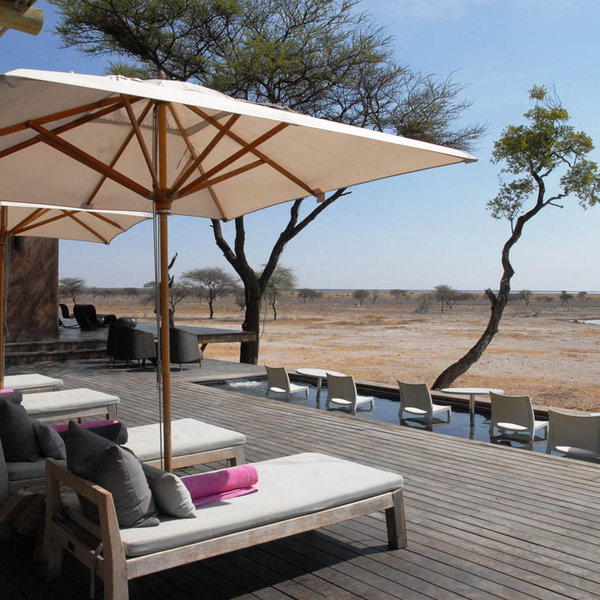
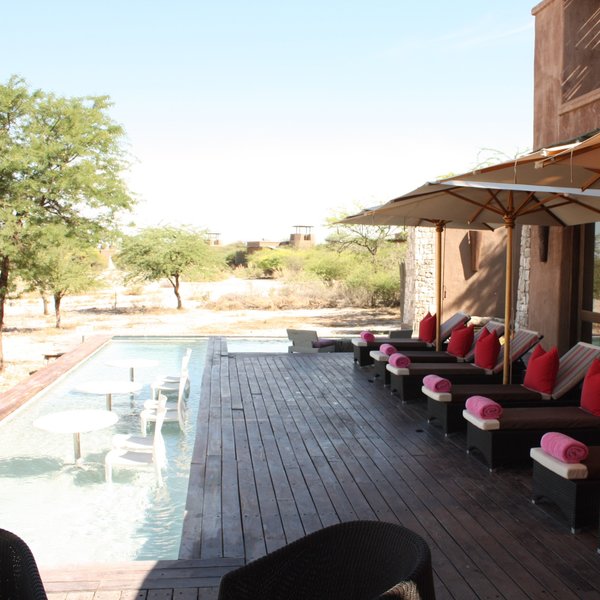
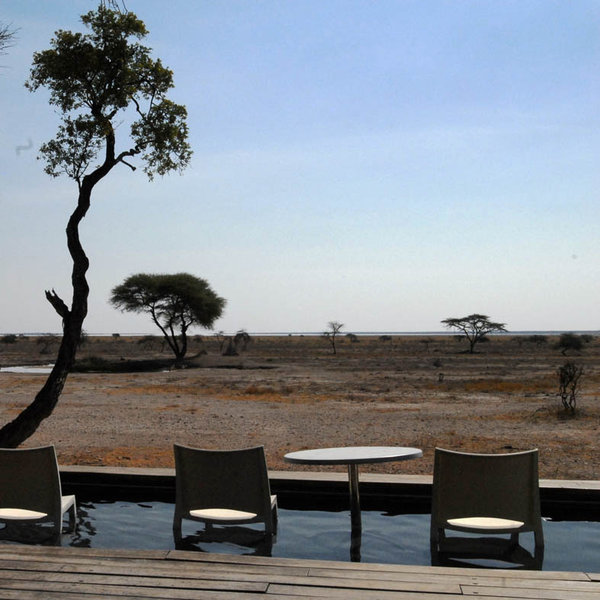
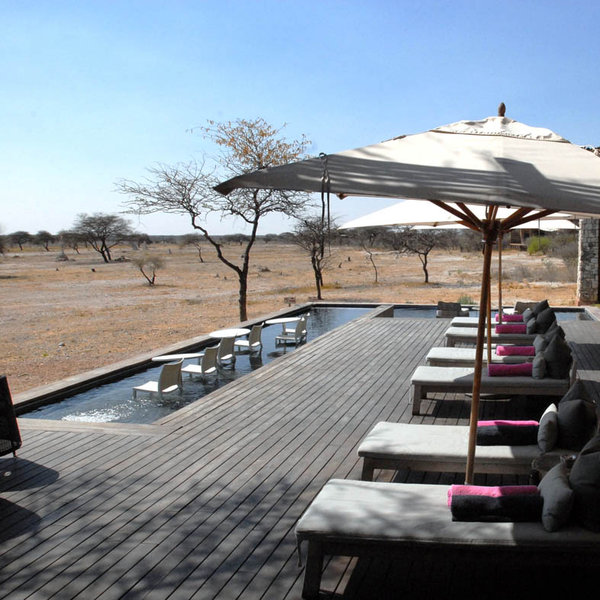
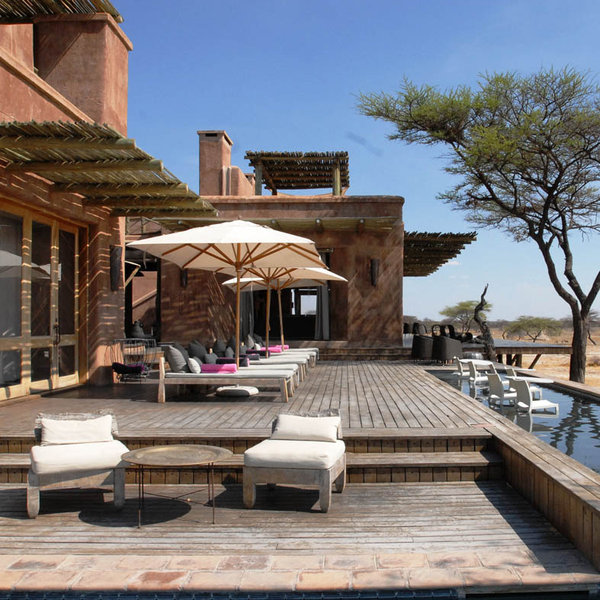
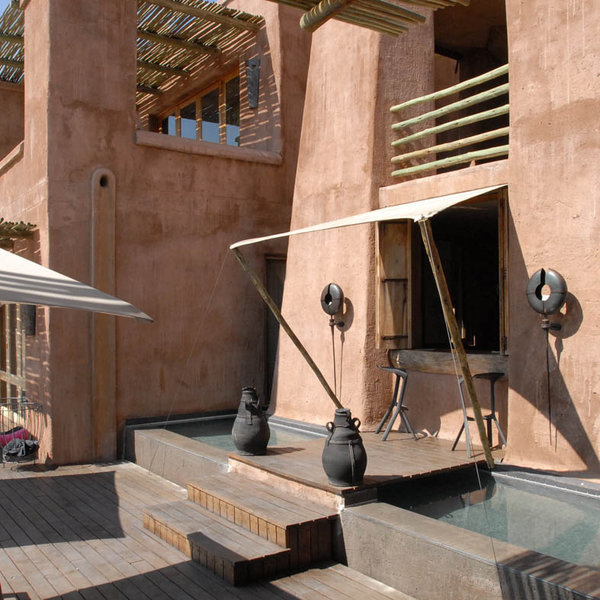
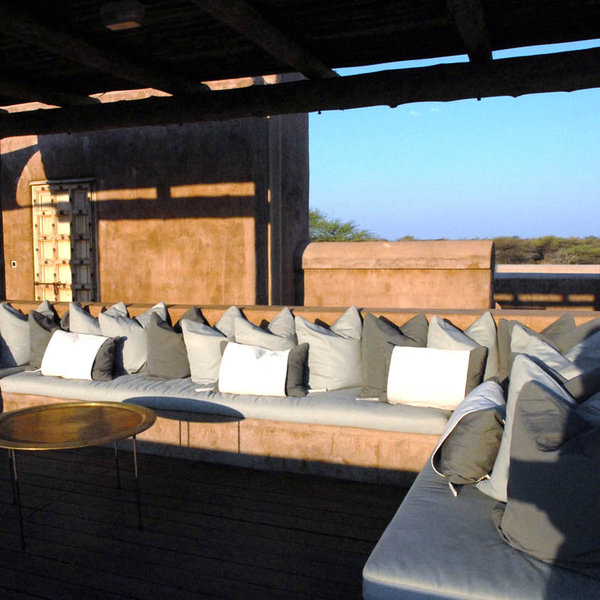
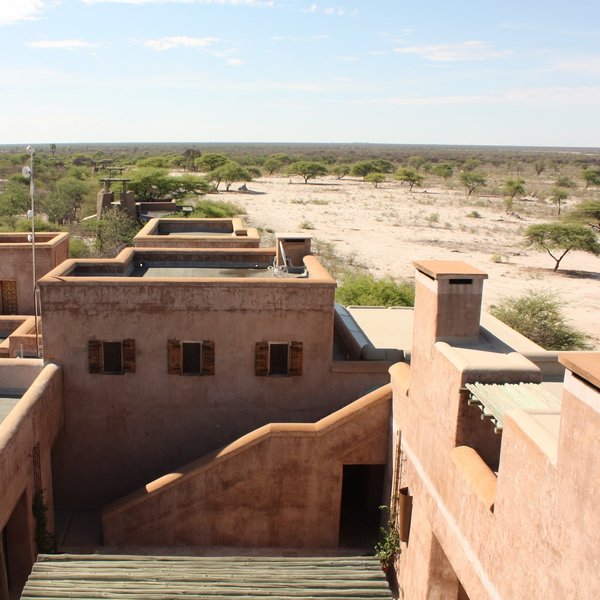
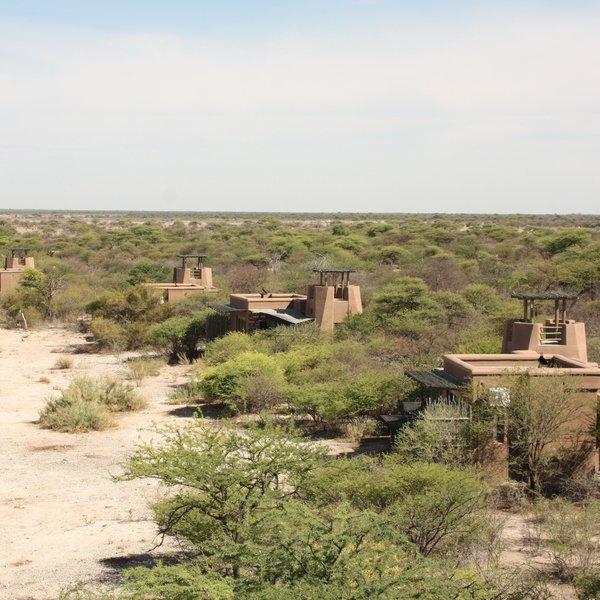
Expert Africa's gallery
When we travel we take lots of photos ourselves to give you a real and un-edited view of the safaris. See our 46 pictures of Onguma The Fort to get the candid view.
View galleryOnguma The Fort: Our full report
Located on the 340km² Onguma Reserve, Onguma The Fort (previously known as Onguma Plains Camp) is very close ...
... to the eastern entrance gate of Namibia’s Etosha National Park. With a strong Moroccan theme and a striking water feature, it is an elegant and stylish base from which to explore the park.
The Fort is the most luxurious of the Onguma properties and is suited to those who like their creature comforts. Although it shares the reserve with its sister properties Onguma Bush Camp , Onguma Tented Camp , Onguma Tree Tops and Onguma Etosha Aoba , it is entirely separate and totally private. It also has its own waterhole frequented mainly by warthog, springbok, zebra and impala, with the larger game coming through occasionally.
The overall design is quite eye catching - many would say stunning, however not everyone will necessarily appreciate its distinctive style and architecture, especially those looking for an more authentic tented safari lodge.
With its turret and 12 rooms, each designed like a mini fort, Onguma The Fort clearly does resemble a north African fortress. Lined up in rows of six on either side of the main building, each room is about 50m from the next, offering privacy and seclusion. The lodge uses a golf buggy to ferry guests from their rooms to the main area and back, especially after dark when it is not safe to walk on your own.
The spacious rooms feature high-beamed ceilings and a décor of terracotta and browns mixed with bright colours. Dominating each room is a large double bed, or twins, surrounded by mosquito netting. Large glass windows to the front of the room offer a view of the waterhole and Fischer's Pan, and any passing game. Outside is a large, partially covered deck with a shady tree, set with sunloungers and a bench topped with colourful cushions.
All rooms are equipped with a small writing desk and a fireplace, along with a minibar, tea- and coffee-making facilities, a telephone and air conditioning. There's also mosquito repellent, a hairdryer, a couple of nature books and magazines, and a basket of pool towels should you wish to visit the swimming pool.
The spacious bathrooms lead off an entrance hall and continue the Moroccan theme. Each has his and hers basins, a shower and a toilet, plus a small chair or lounger. A door leads from the bathroom onto the deck where an outdoor shower is fully screened from other rooms, although watch your bare feet on the hot deck if you choose to shower in the middle of the day!
Inside the tower of the main building, Onguma The Fort also boasts the air-conditioned Fort Suite or 'Sultan Suite', which is perfect for honeymooners. Here, the large bedroom has its own lounge area, complete with a fridge, satellite TV and a phone, and a private viewing deck overlooking the waterhole. In the bathroom you'll find both a bath and an open-air shower.
In the main area of the Fort, the Moroccan style is evident in heavy carved antique doors, north African lanterns, and ochre plaster walls. The lounge, which has views of the waterhole, is furnished with comfy sofas and brightly coloured scatter cushions around a fireplace. The open-sided dining area allows you to view the stars from your table, and the friendly, efficient staff all contribute to make your dining experience a special one. And to the back of the building is a large, tree-shaded deck with more tables and chairs and great views of the waterhole and the Pan beyond. Drinks served here are accompanied by tasty canapes from the bar.
Flowing throughout the building is a large water feature, which incorporates little waterfalls and, in the central courtyard, a long narrow pool divided in two by stepping stones. At night, the entire water feature is lit by lanterns, lending a calming atmosphere.
The water feature extends to the swimming pool to one side of the main area where you’ll also find an outside bar, where a few shaded sunloungers adorn the deck. There's even a separate shallow pool with chairs and tables in it, so that you can keep cool while enjoying your afternoon drink! Water from here flows via a small waterfall into a cool plunge pool, which is very welcome on a hot day.
Overlooking all this is The Fort's main tower, from where there's a beautiful view over the Onguma Reserve. It's a great place to watch the sunset (the waiters will even bring your drink up the tower for you), with a cushioned seating area at the top, and a larger seating area filled with scatter cushions on the level below. Below the main area is an air-conditioned bar and wine cellar where guests are welcome to select a bottle to enjoy with dinner.
Activities from Onguma The Fort include morning and afternoon game drives in Etosha itself, although the camp is well situated for those driving themselves into the park. Our expert guide, when we last stayed in May 2018, made our game drive into Etosha a memorable one by finding a cheetah with two cubs – a real highlight that we were lucky to see. Within the Onguma Reserve itself, where self-driving is not permitted, there are sundowner drives. It's also possible to do morning bush walks, which last about 90 minutes where you can also visit an ‘eye-level’ hide for a different perspective on watching wildlife.
On a previous visit we departed for a walk at around 7am. We were led by one of the knowledgeable, trained walking guides on the Onguma reserve and we enjoyed the walk thoroughly. The experience was less about game sightings but instead about focusing on the smaller things that you may miss from a safari vehicle. We stopped numerous times on a gentle walk looking at various plant and tree species, insects, termite mounds and animal tracks. The walk was finished perfectly as we spotted a leopard tortoise romping through the undergrowth just a few meters from the car. We observed this member of the 'Little 5' for a while and then made the short drive back to camp for a well-earned breakfast.
Onguma also offer simple spa treatments and massages from the comfort of your own room, on request.
Activities
4WD Safari
Birdwatching
Guided walking safari
Private activities
Families & children
- Attitude towards children
- Onguma Fort welcomes children aged 7 and above
- Property’s age restrictions
- No children under 7 are accepted here.
- Special activities & services
- None
- Equipment
- None
- Generally recommended for children
- No. Onguma The Fort has a very adult feel and families with children would be better suited at Onguma Bush Camp , which caters well for children of all ages.
- Notes
- The camp is unfenced and so is the pool so children should be supervised at all times.
Food & drink
- Usual board basis
- Half Board
- Food quality
- On our last visit in May 2018, the food was varied, interesting and imaginative, with authentic South African cuisine mixed with subtle north African flavours.
A sumptuous breakfast buffet is served on a large wooden table in the centre of the lounge. As well as the usual selection of fruit, yoghurts, cheeses, meats and breads, guests can have a hot meal cooked to order by the chef.
A three-course lunch is served with a choice of main courses. The food is light and tasty – perfect for a hot day. Our starter was stuffed mushrooms, followed by a choice of salade niçoise or vegetable gnocchi with a tomato sauce. Dessert was a lemon cheesecake.
Dinner is a tasty four-course meal. We enjoyed the starter of spicy African peanut soup, which was followed by a second starter: an aubergine stack with bacon, tomato and mozzarella cheese. The main course was either grilled eland steak with cranberry sauce or Dijon-baked salmon fillet with hollandaise sauce. Both were accompanied by potato wedges, yellow patty pan (a type of squash) and broccoli. Dessert was a rather indulgent though delicious chocolate Amarula mousse.
Snacks such as biltong and peanuts are served to those taking pre-dinner drinks on the deck or out on an afternoon game drive, while those from the minibar in your room are at additional cost. - Dining style
- Individual Tables
- Dining locations
- Indoor and Outdoor Dining
- Further dining info, including room service
- Yes
- Drinks included
- Included when booked on a full board and activities basis only – except for premium brand and imported wines and spirits.
The tap water is considered to be drinkable, but bottled water is also available.
Our travellers’ wildlife sightings from Onguma The Fort
Since mid-2018, many of our travellers who stayed at Onguma The Fort have kindly recorded their wildlife sightings and shared them with us. The results are below. Click an animal to see more, and here to see more on our methodology.

100% success

100% success

100% success

94% success

93% success

73% success

64% success

46% success

46% success

46% success

38% success

31% success

31% success

23% success

9% success

8% success

0% success
Getting there
- Location
- Etosha National Park, Namibia
- Ideal length of stay
- Spend 2–3 nights here both to explore Etosha and to enjoy relaxing at the lodge.
- Directions
- The entrance to the Onguma Reserve is on your right just before you enter Etosha National Park at the Von Lindequist Gate. Onguma The Fort is about a 20-minute drive from the reserve entrance.
- Accessible by
- Self-drive or Fly-and-Transfer
Special interests
- Honeymoons
- Onguma the Fort is an isolated and exclusive camp with lovely views across Fischer's Pan. Spoil yourselves with the delicious food and great wines on your Namibia honeymoon. For an even more special stay consider the even more luxurious Fort Suite.
- See ideas for Honeymoons in Namibia
- Photography safaris
- Photographers wanting to calmly sit and unobtrusively watch nature will enjoy the equipped water level hide on the Onguma Reserve. Spend a few hours at the hide as an activity from Onguma The Fort.
- See ideas for Photography safaris in Namibia
- Walking safaris
- A bush walks is a great way to stretch your legs and get closer to nature. Explore the Onguma Reserve with a guide and get closer to animals big and small on a walking safari.
- See ideas for Walking safaris in Namibia
- Wildlife safaris
- Onguma The Fort is blessed with a prime location on the Onguma Private Reserve overlooking Fischer’s Pan, and is adjacent to the wildlife rich Etosha National Park, so game viewing from here is of the highest order.
- See ideas for Wildlife safaris in Namibia
- Wellbeing retreats
- Enjoy some holistic papering with treatments from Onguma the Fort's resident therapist, the perfect way to relax and unwind between safari activities on you Namibian trip.
- See ideas for Wellbeing retreats in Namibia
- Luxury safaris
- Onguma The Fort has been designed with a Moroccan theme complete with ornate, antique doors, lantern-lit waterfalls and sumptuous interiors. High ceilings, with lots of light and air, add the opulent feeling of a smart desert camp beside an oasis.
- See ideas for Luxury safaris in Namibia
Sustainability
Oshivelo Farming and Onguma Anti-poaching Unit
As well as providing excellent safari lodges, in 2012 The Onguma group set up a large-scale sustainability project, Oshivelo Farming, which successfully provides jobs and income for many of the local people - at present there are over 180 permanent, plus another 100 seasonal employees. They have cultivated and developed a farm that has grown in size over the years, which now produces a vast array of vegetables, so much so that several hundred tonnes of vegetables are currently sold monthly. Currently it’s one of the top five vegetable producers in Namibia! Through the project, they are also able to help the local Oshivelo community with equipment etc. for the school and they also built the village soccer field.
Onguma are also involved in conservation and as such run the Onguma anti-poaching unit, on the reserve to help protect the endangered population of rhino. Since its introduction, the poaching of rhino on the reserve has dramatically decreased, which is great news!
See more great sustainability projects in Namibia
Communications
- Power supply notes
- There is a back up generator
- Communications
- All rooms have a phone and there is also cellphone reception at the camp. There is free WiFi in both the main area and the rooms.
- TV & radio
- There is a satellite TV in the Sultan Suite.
- Water supply
- Borehole
- Water supply notes
- The bathrooms are fully plumbed and have flush toilets
Health & safety
- Malarial protection recommended
- Yes
- Medical care
- The nearest doctor is in Tsumeb, and the camp has a first-aid box and some of the camp staff are first-aid trained.
- Dangerous animals
- High Risk
- Security measures
- The gate to the reserve is manned during the day and is locked at night. Guests are escorted to and from their rooms after dark.
- Fire safety
- Fire extinguishers are found in each room and in the main area of the camp.
Useful info
- Disabled access
- On Request
- Laundry facilities
- A laundry service is available for an extra charge.
- Money
- There is a safe in each room.
There is no currency exchange - Accepted payment on location
- Payments are accepted by Visa and Mastercard or in cash in Namibian dollars or South African rand.
Plan and book your trip with Expert Africa
All of our trips are tailor-made, so we'll always adapt them to suit you. Talk to an Expert and let us plan and arrange your perfect trip.

Talk to an Expert
Call or email us now! We’ll match you with the Specialist in our team who is best suited to help you. Then together we can start planning your trip.

Set up your itinerary
Based on our experience and your ideas, your specialist will create a detailed, costed itinerary. We’ll refine it together, until we have a trip that you’re perfectly happy with.

Prepare for your trip
The same Specialist will make the seamless arrangements for your trip, send you detailed travel documents, and be available to answer any questions before you depart.

Travel with peace of mind
After you set off, you’ll be cared for by our partners in Africa, most of whom have worked with Expert Africa for decades. And if you ever need us urgently, we’re available 24/7.

When you return
We love to learn about your trip, and so will always be grateful if you’ve the time to give feedback to your Specialist when you return.
Onguma The Fort's location
Look closer at the environment and surroundings of Onguma The Fort.
Other lodges in Etosha National Park
Alternative places to stay in this same area.
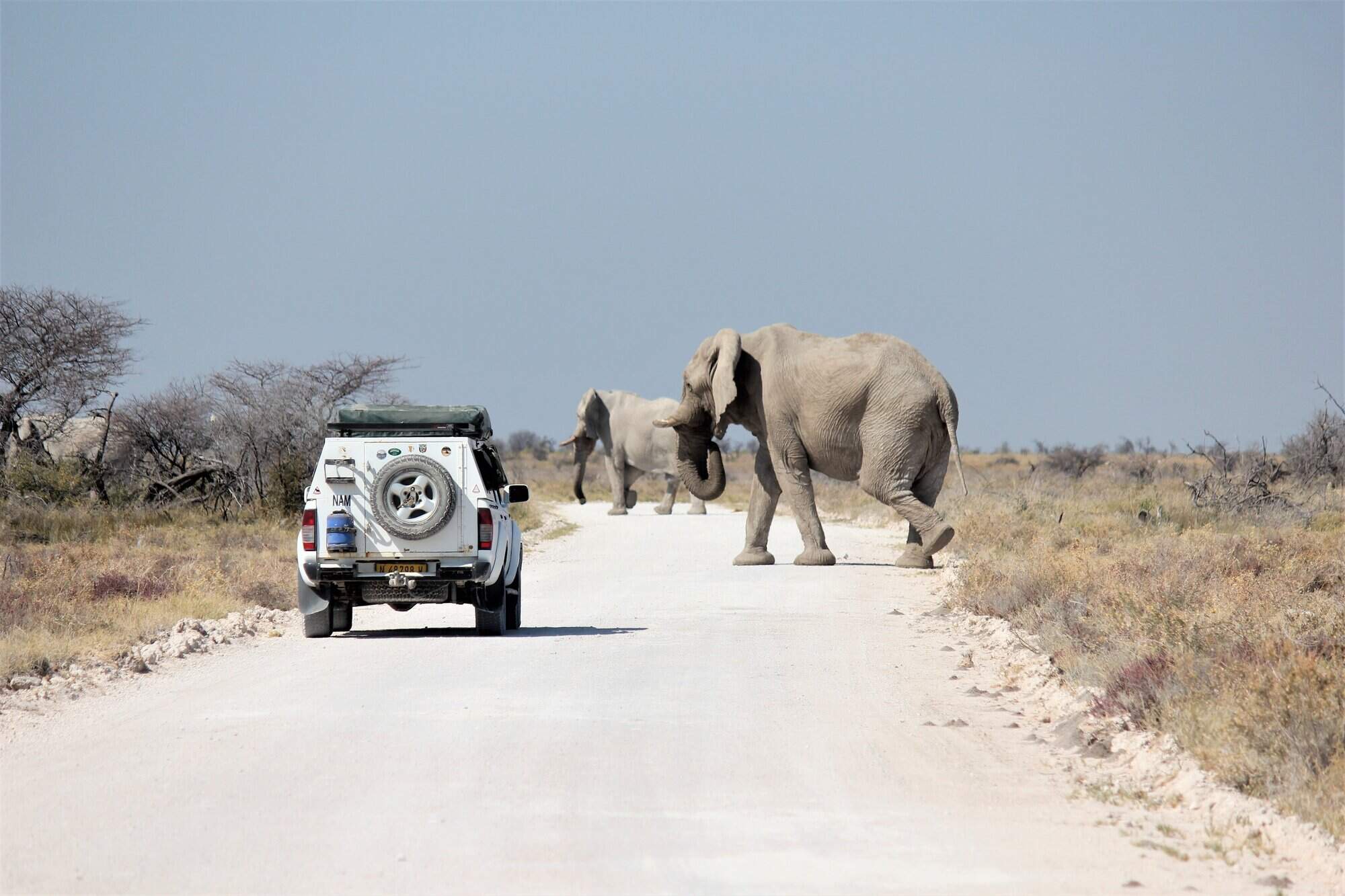
Okaukuejo Camp
Set within Etosha National Park, Okaukuejo Resort is a large camp with a productive, floodlit waterhole.
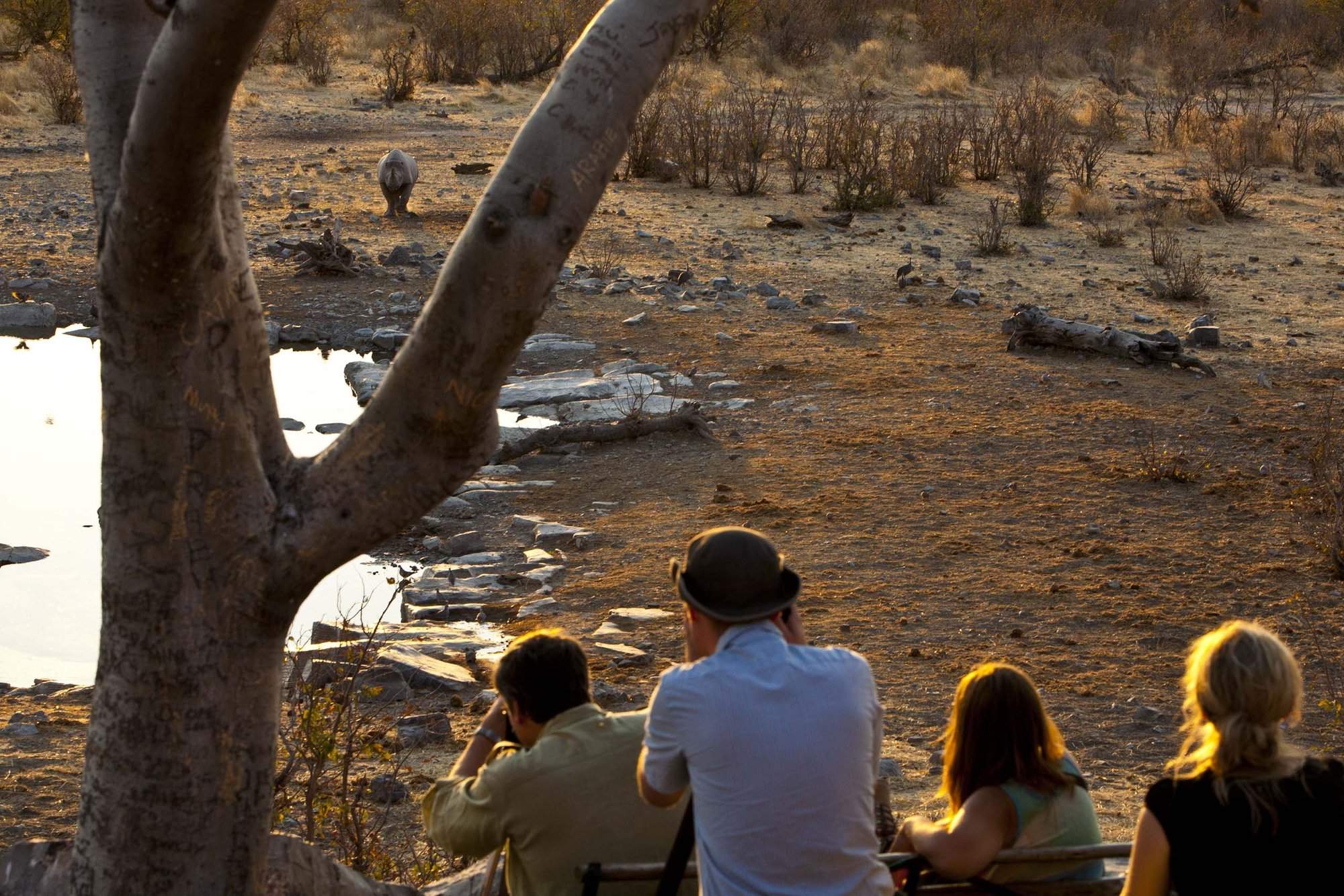
Halali Camp
The smallest of Etosha's erstwhile restcamps, overlooking its own floodlit waterhole, Halali has a superb location near the centre of Etosha Pan.
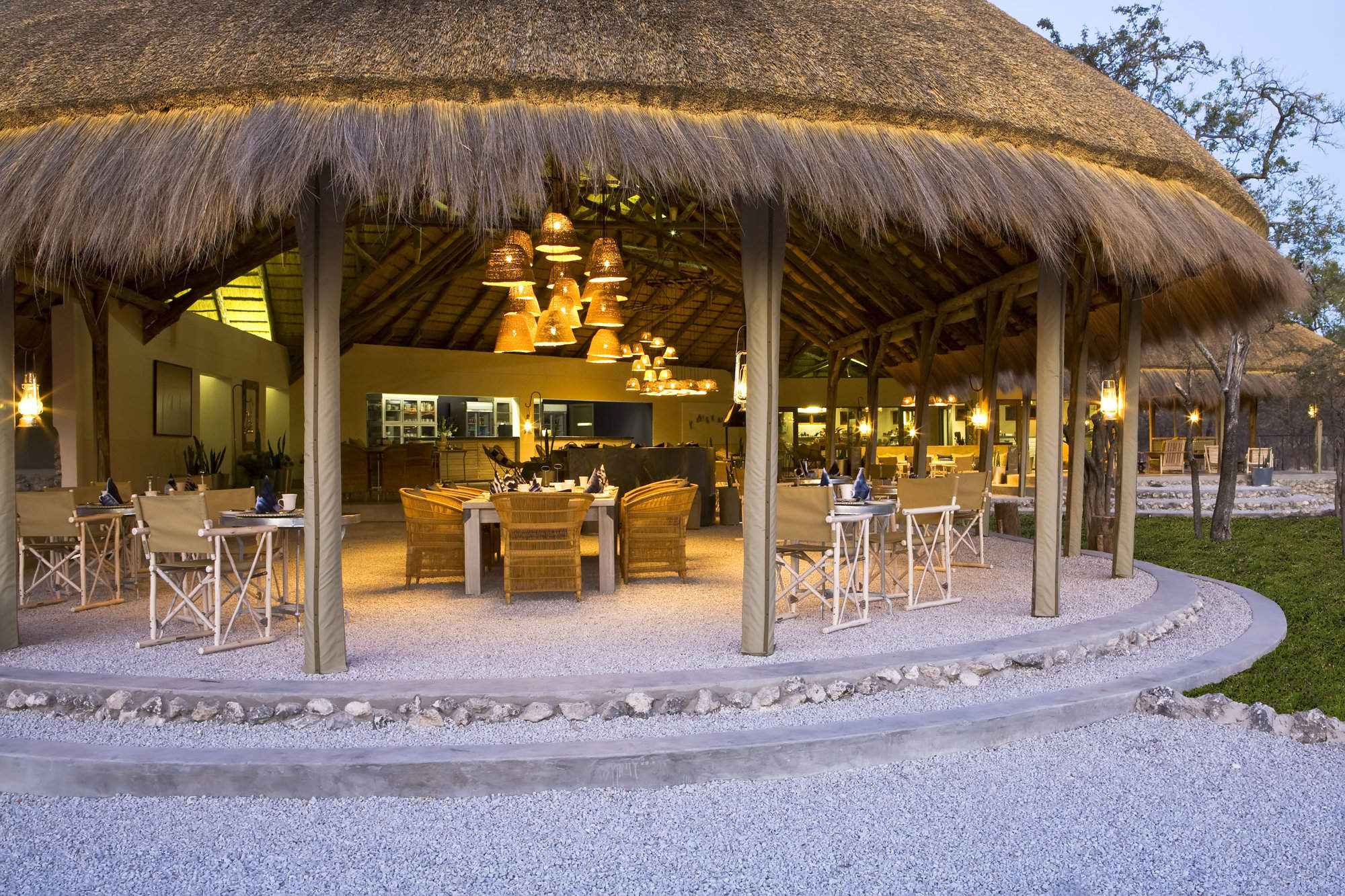
Mushara Bush Camp
The family-friendly Mushara Bush Camp offers great value and is an excellent base from which to explore Etosha National Park.
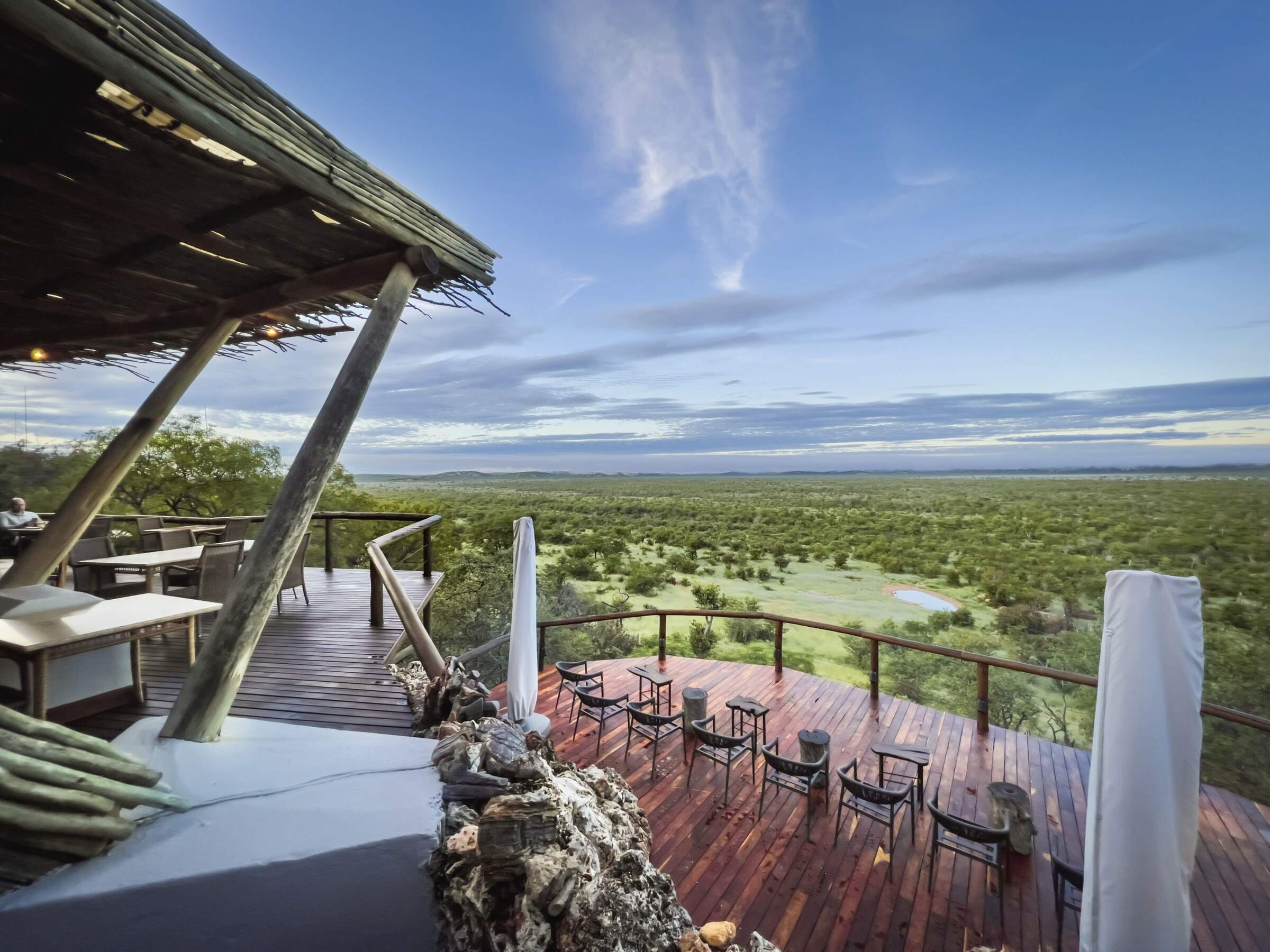
Ongava Lodge
With fantastic views over a private reserve bordering Etosha, the smart Ongava Lodge offers driving and walking safaris on the reserve, and guided drives in Etosha.
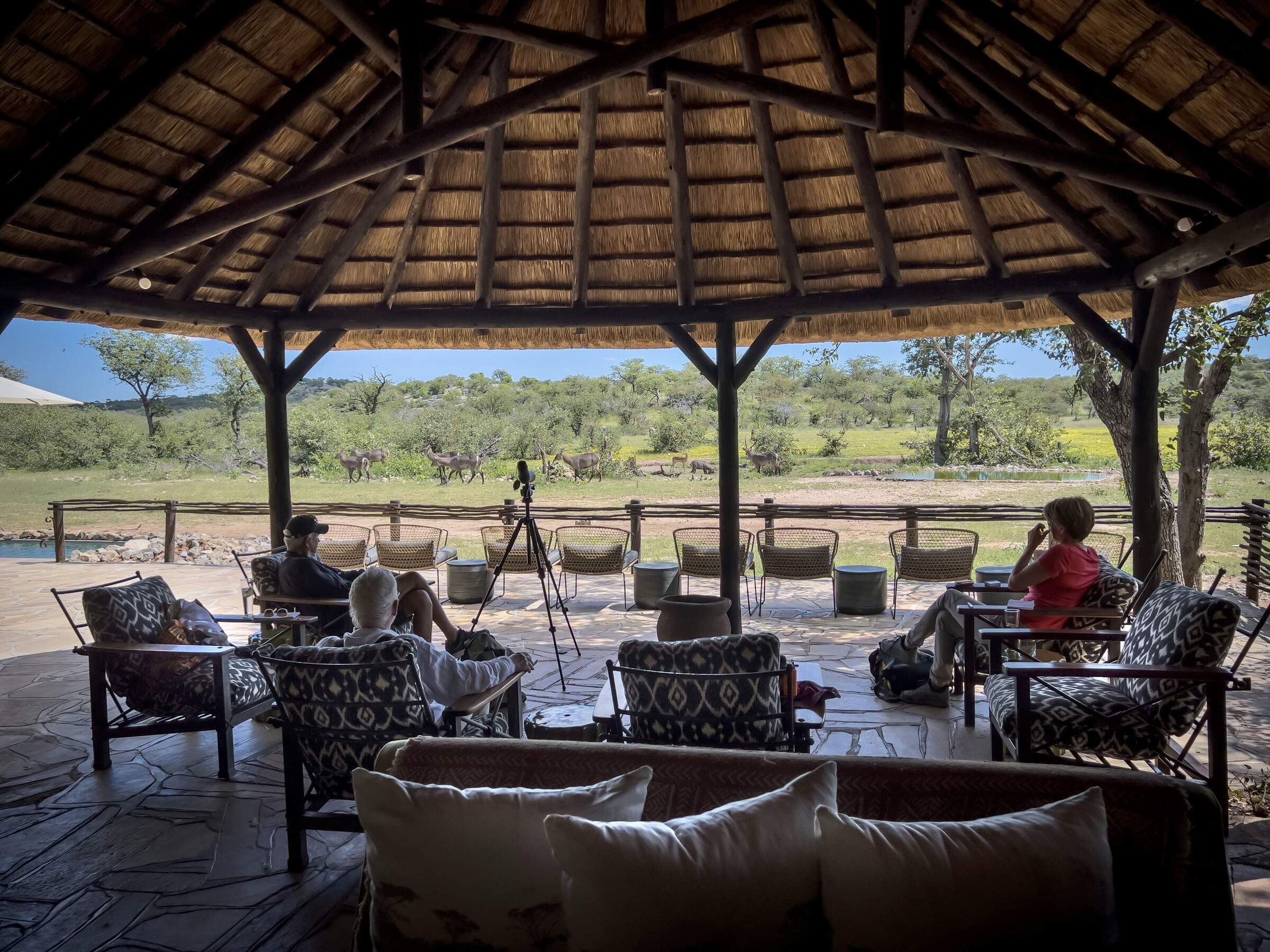
Ongava Tented Camp
Set around a waterhole on a private reserve, the small Ongava Tented Camp combines understated comfort with activities that include walks and night drives.
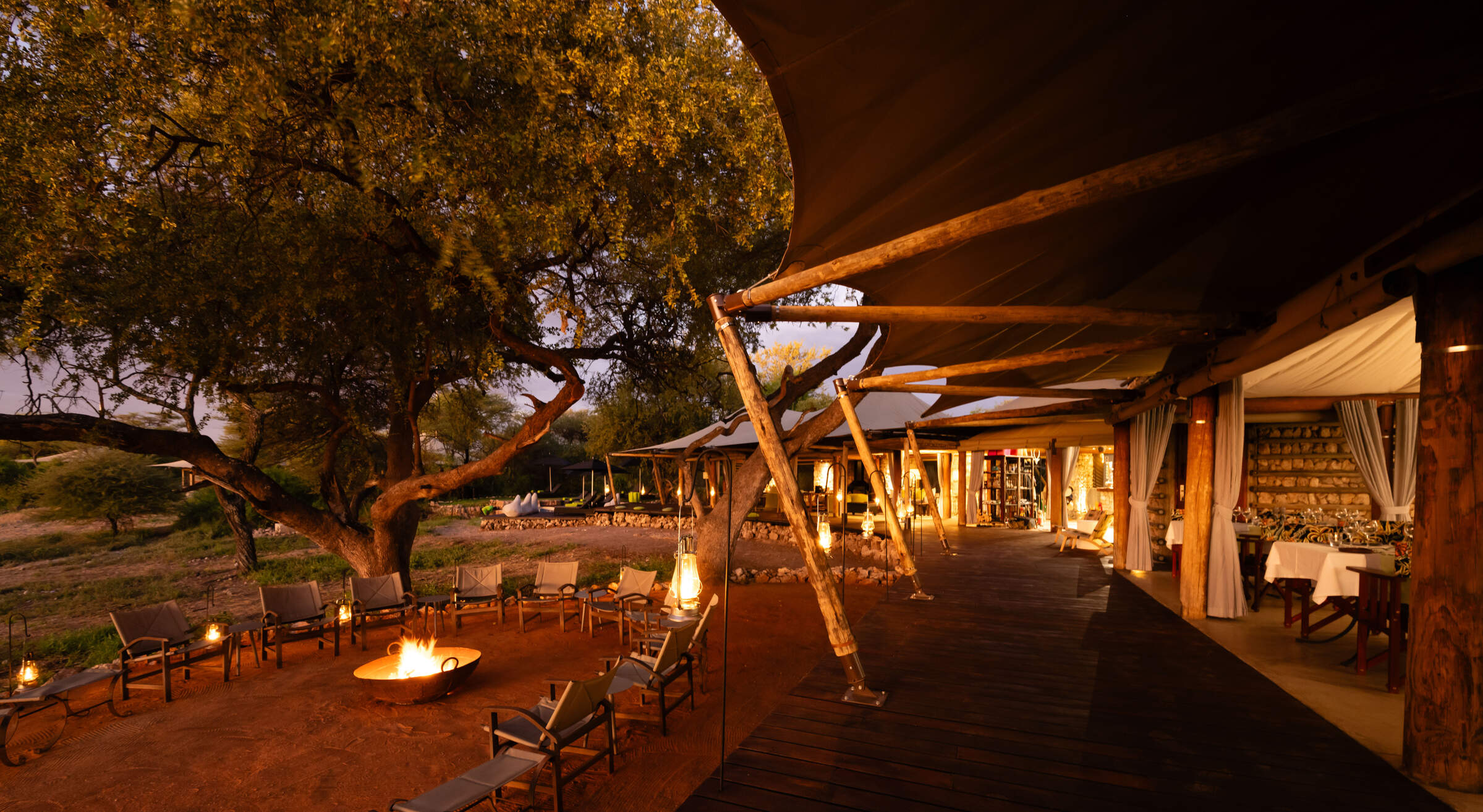
Onguma Tented Camp
Onguma Tented Camp is a lovely, little tented camp which centres around an attractive waterhole a short drive from the Von Lindequist Gate to eastern Etosha.
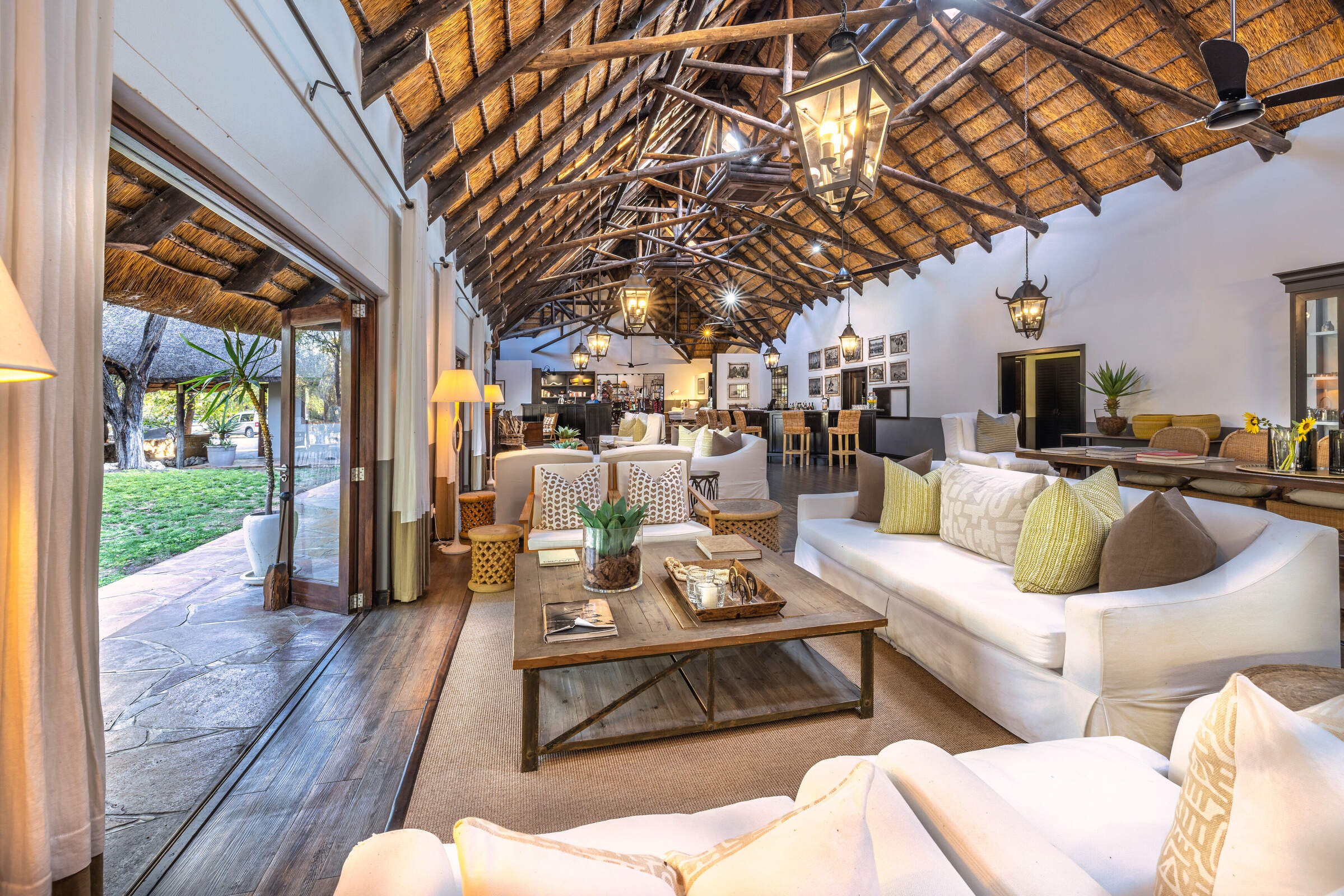
Mushara Lodge
Close to the eastern entrance to Etosha, the comfortable Mushara Lodge is well-placed for exploring the park in your own vehicle or on a guided drive.
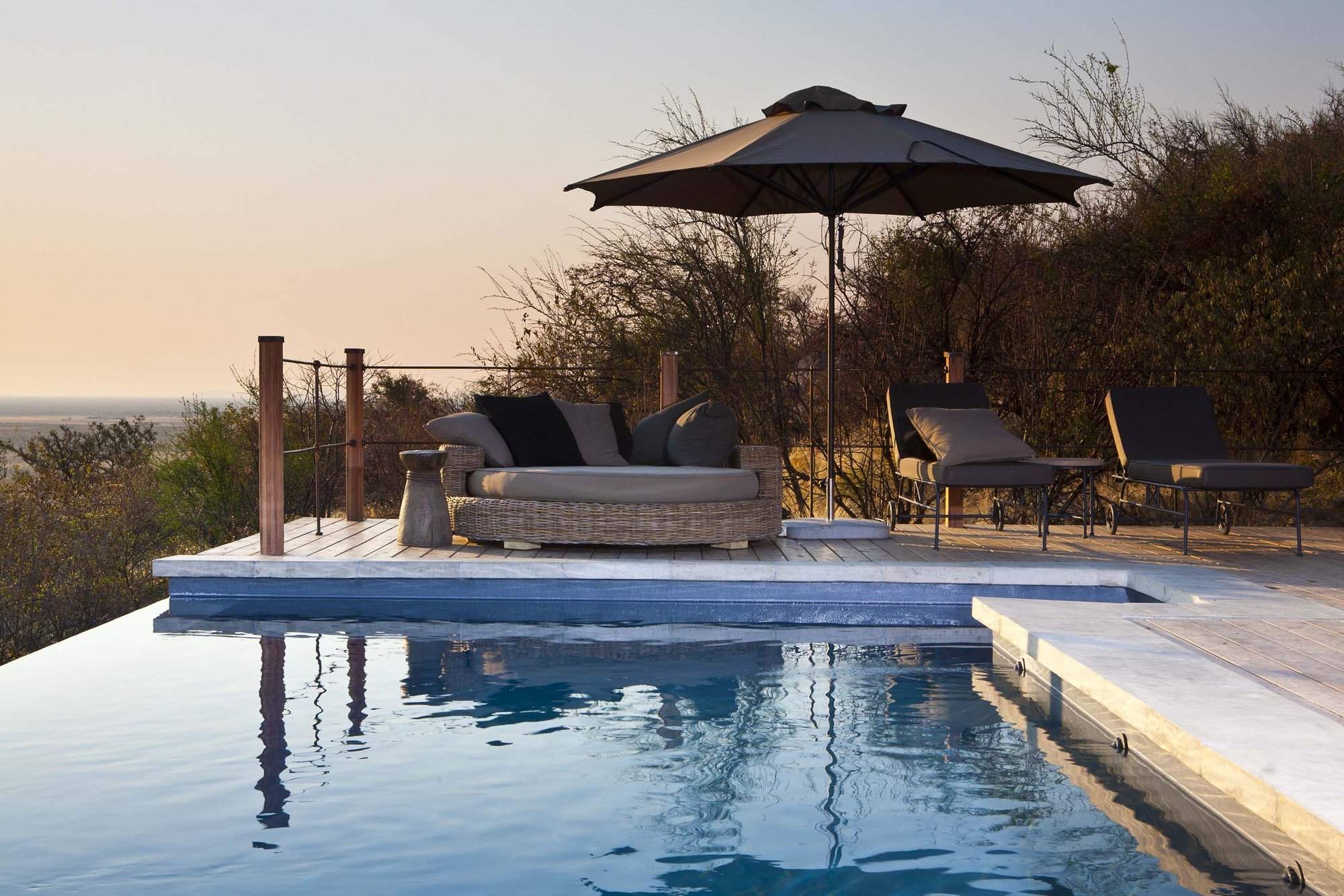
Dolomite Camp
Opened in 2011, Dolomite Camp allows visitors access to the far west side of Etosha National Park, which was previously off limits to most visitors.

Onguma Bush Camp
For great wildlife viewing without breaking the bank, the affordable and understated luxury of Onguma Bush Camp could be perfect.
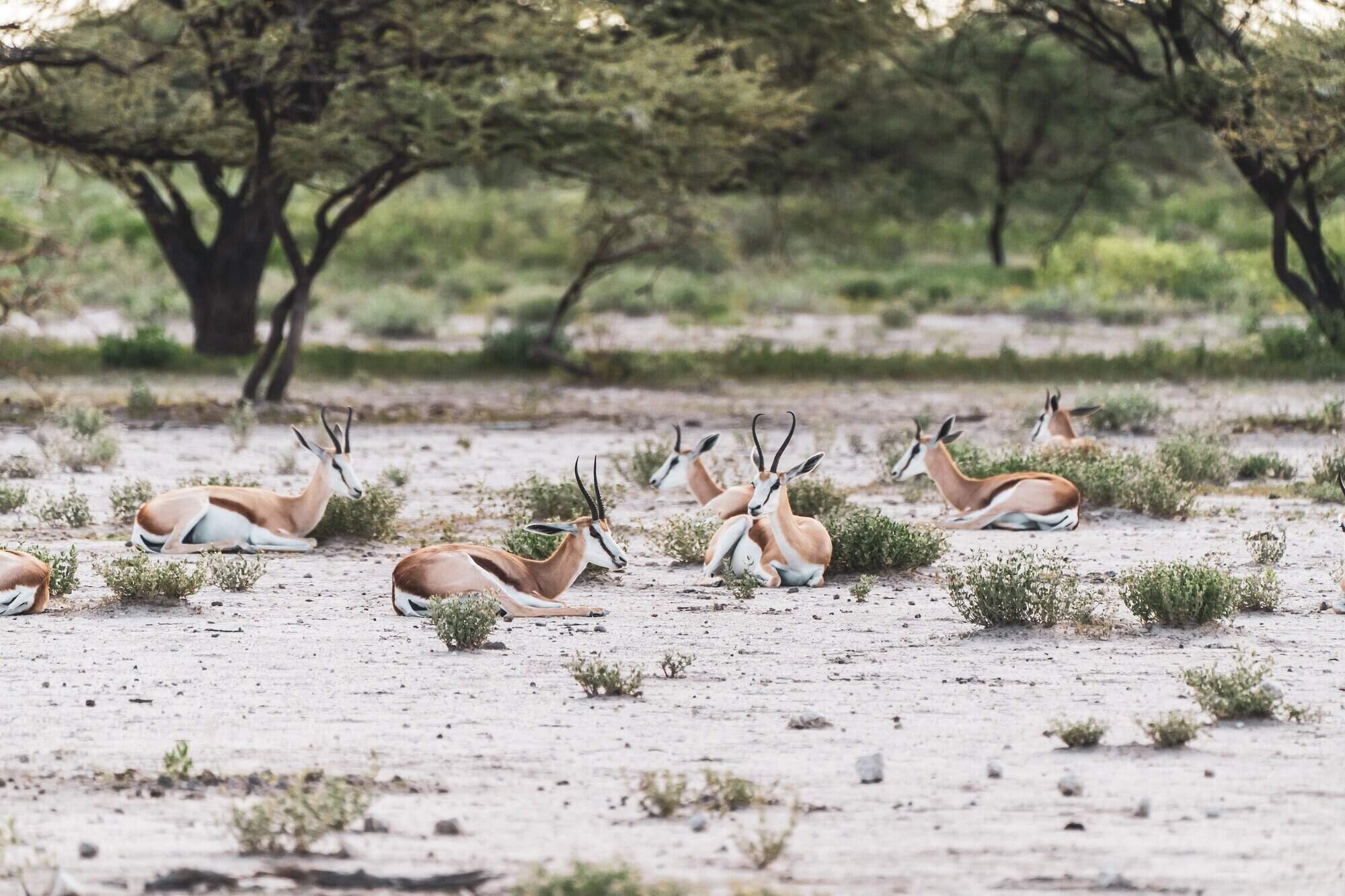
Namutoni Camp
Centred on an old fort, the government run Namutoni Camp is located just inside Etosha National Park, close to Fisher's Pan.
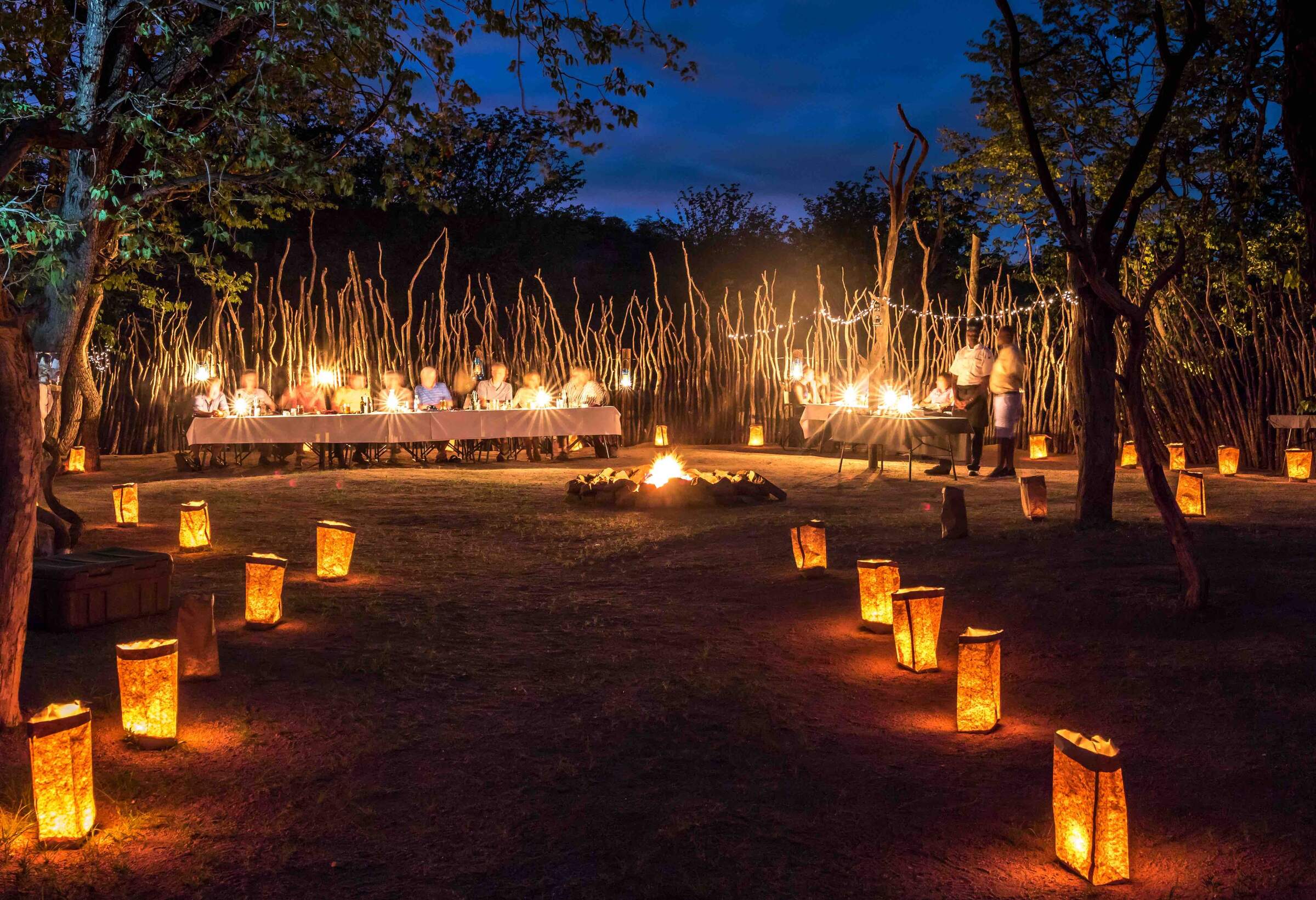
Hobatere Lodge
To the west of Etosha National Park, on the edge of Damaraland, Hobatere Lodge offers good game-viewing on its own reserve.
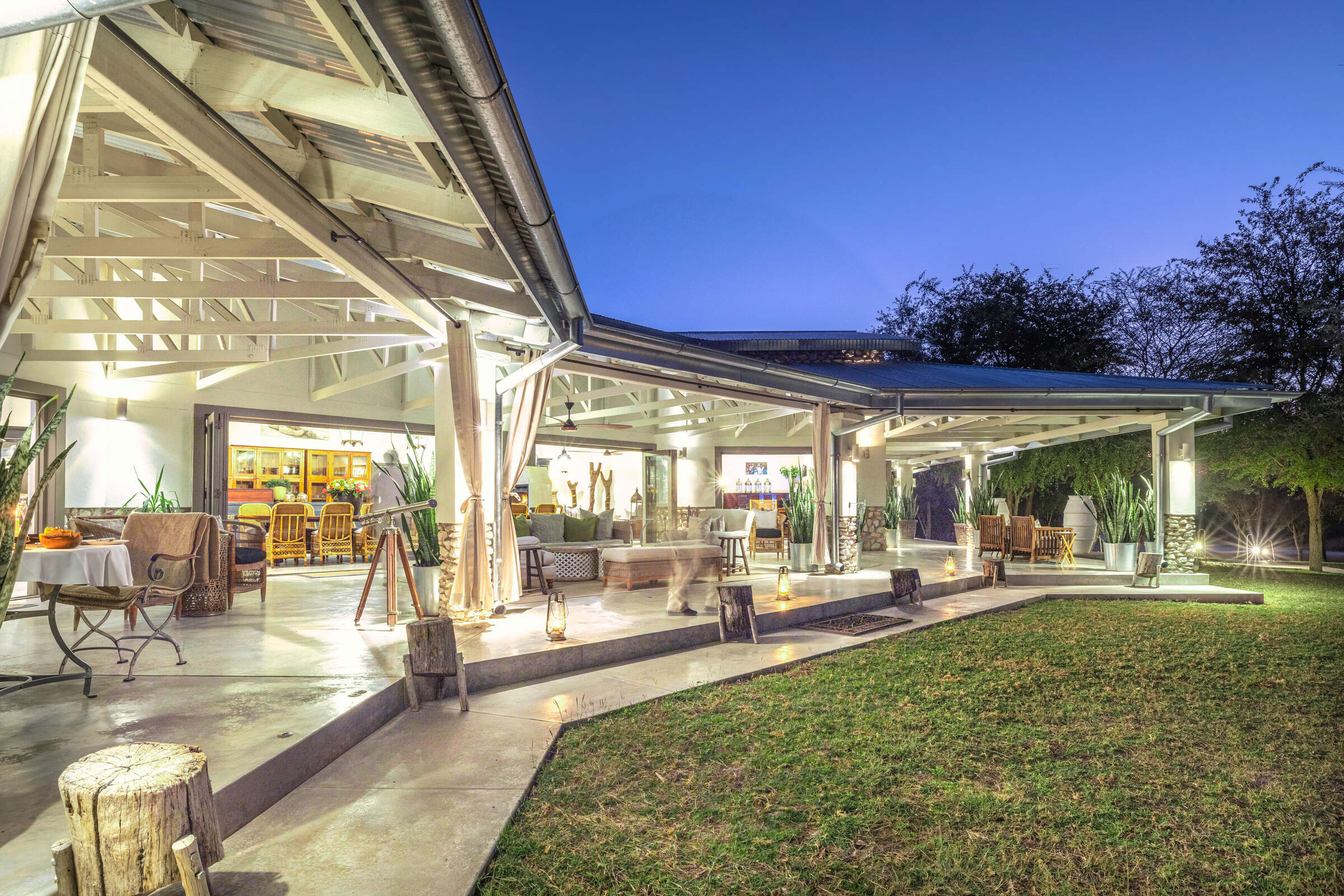
Mushara Outpost
Intimate and luxurious, Mushara Outpost is well-placed on a private reserve to explore nearby Etosha National Park on your own or on a guided drive.
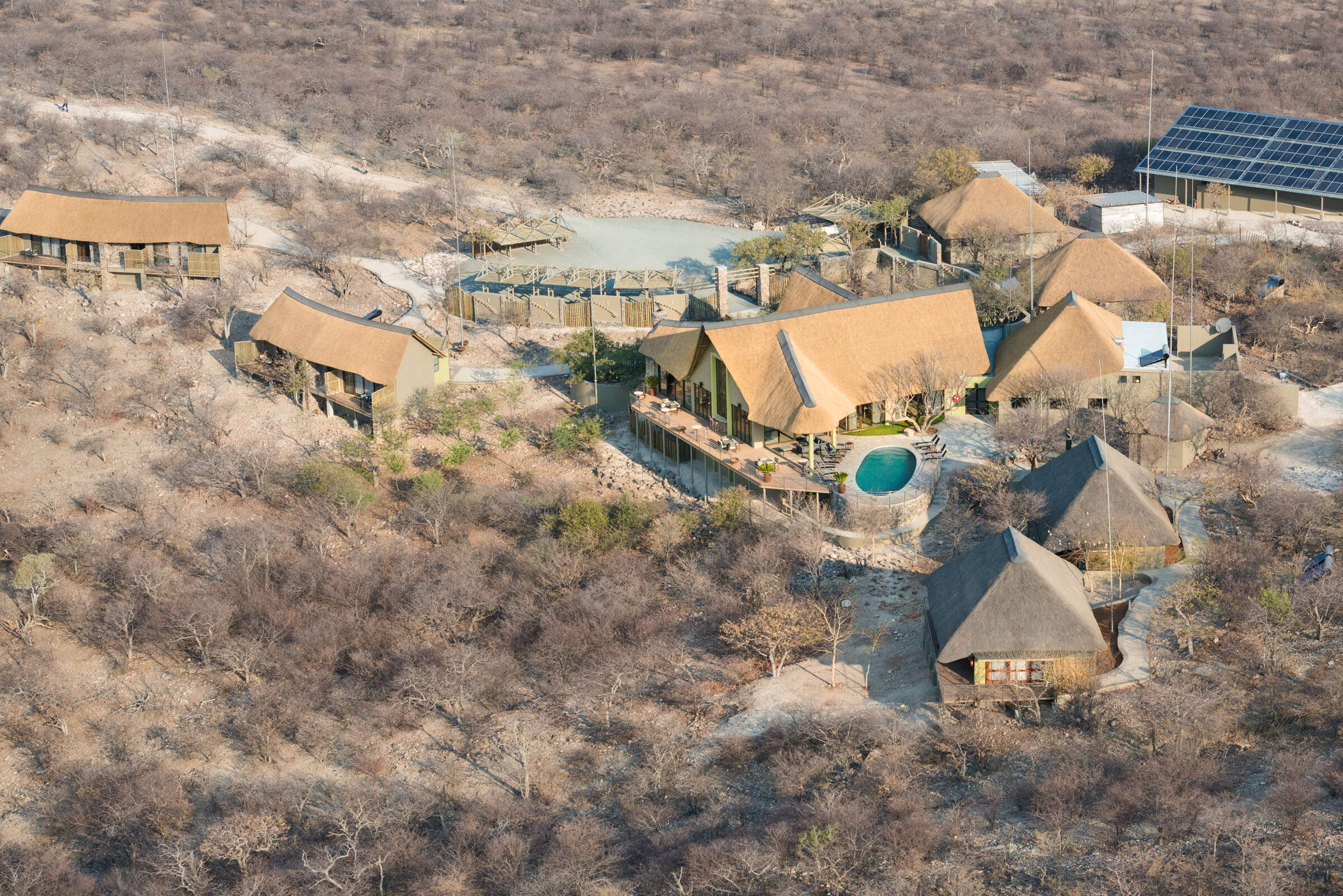
Safarihoek Lodge
At the heart of the private Etosha Heights Reserve, Safarihoek Lodge offers comfortable accommodation and excellent game-viewing.
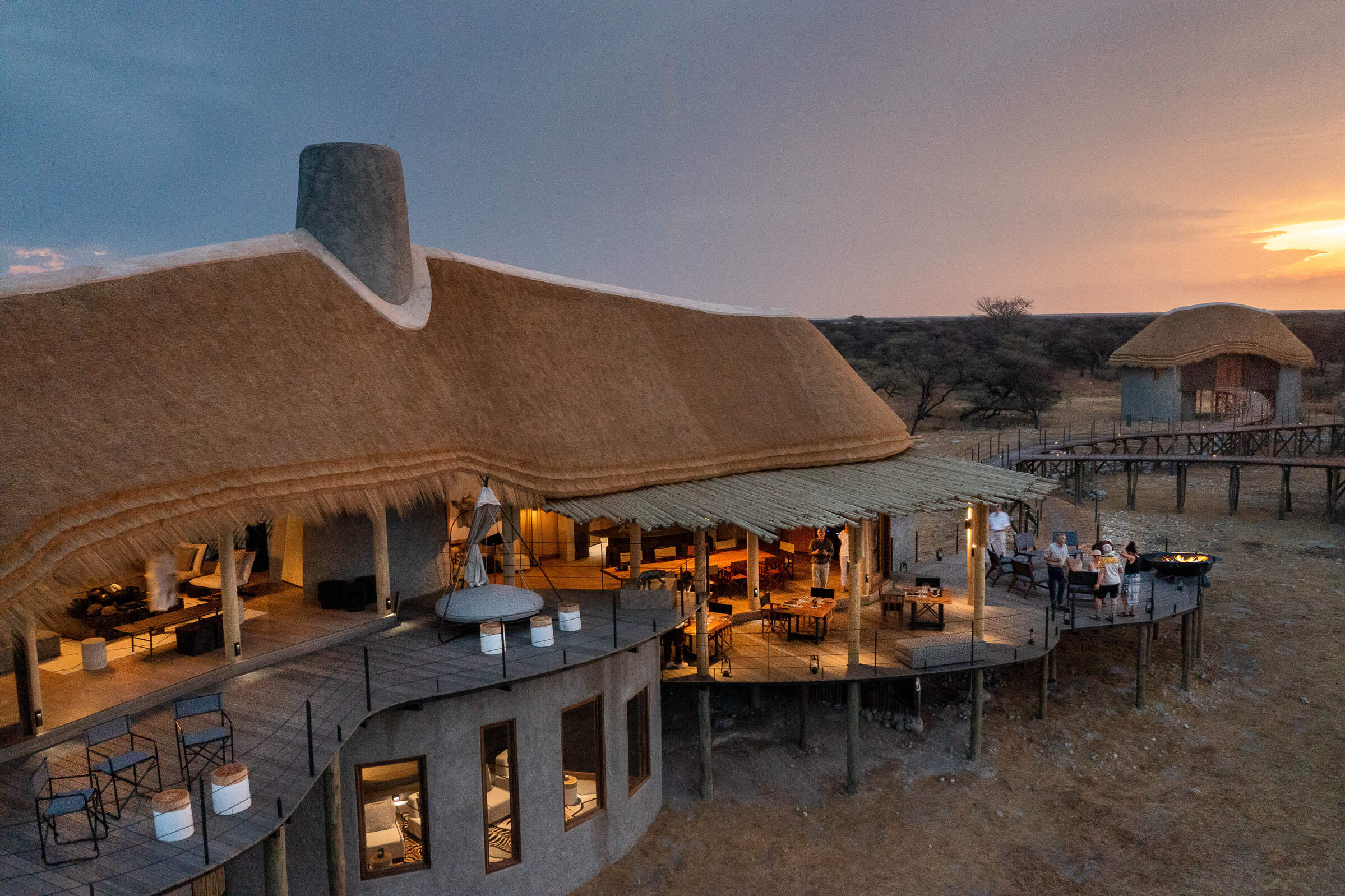
Onguma Camp Kala
For a bird’s eye view across African bush, the stilted rooms at Onguma Camp Kala are truly special.
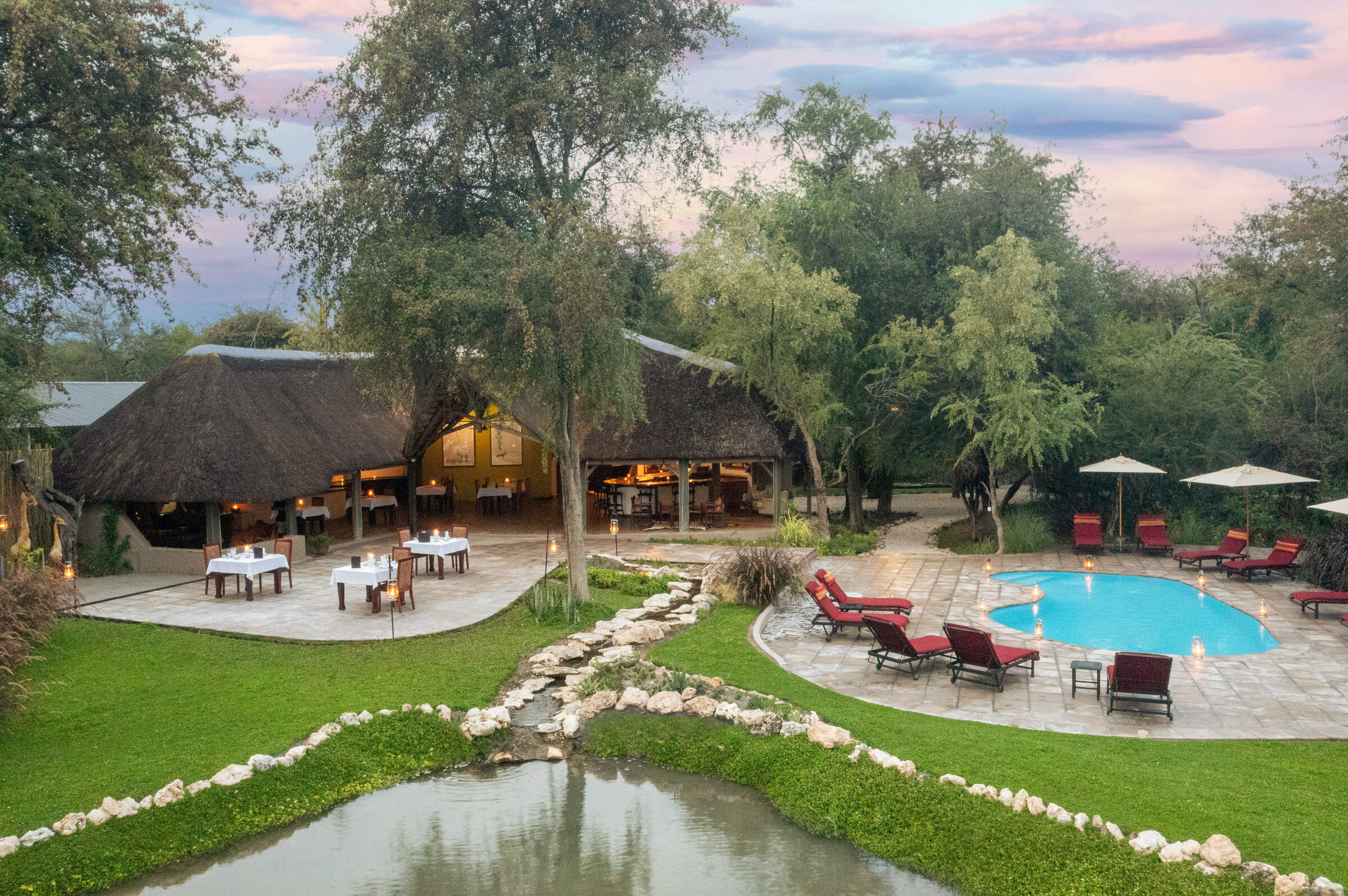
Onguma Forest Camp
From its woodland setting on the Onguma Reserve, Forest Camp is within easy striking distance of Namibia’s flagship national park.
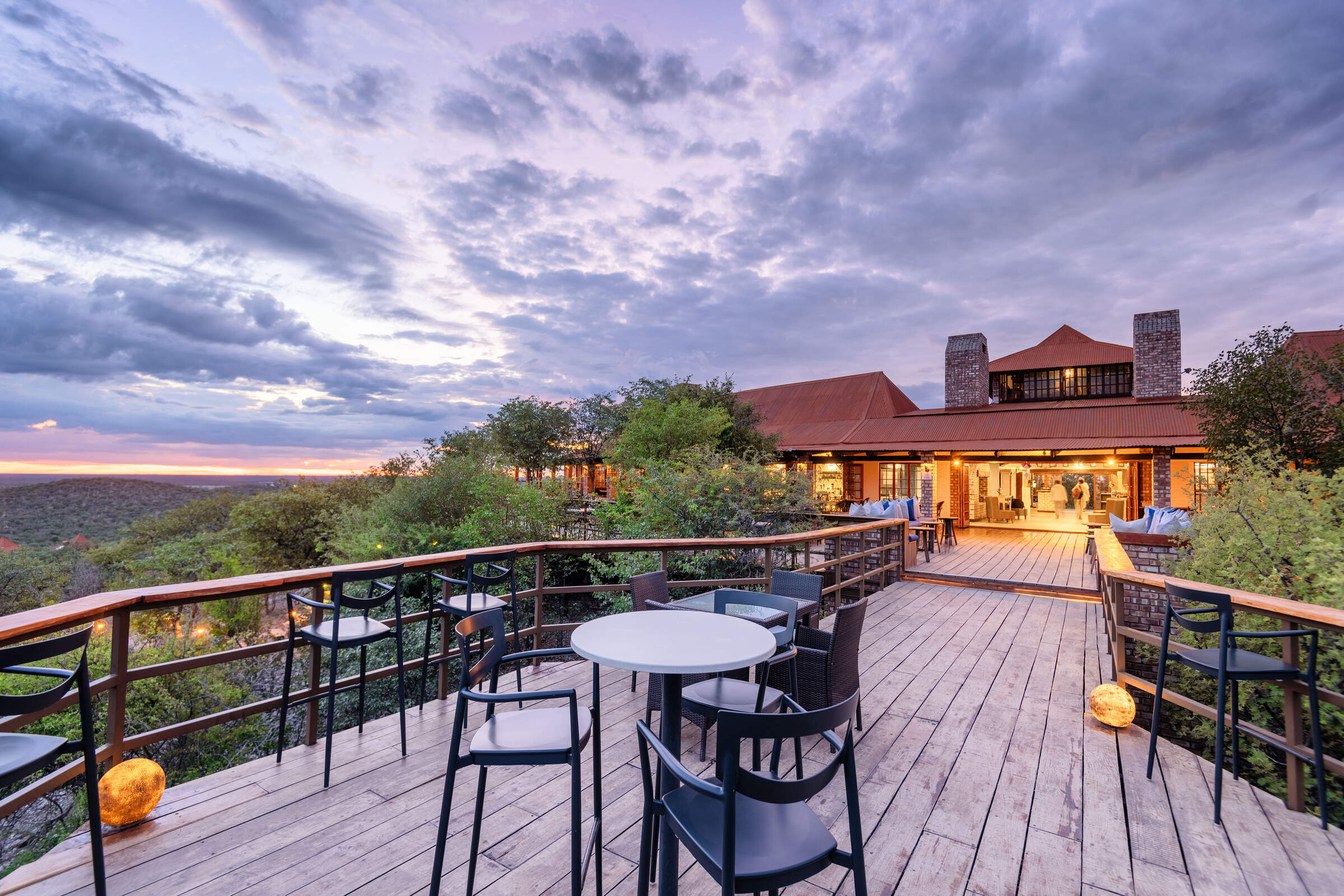
Etosha Safari Lodge
A short drive from Etosha National Park's southern entrance, Etosha Safari Lodge is a convenient base from which to explore the park.
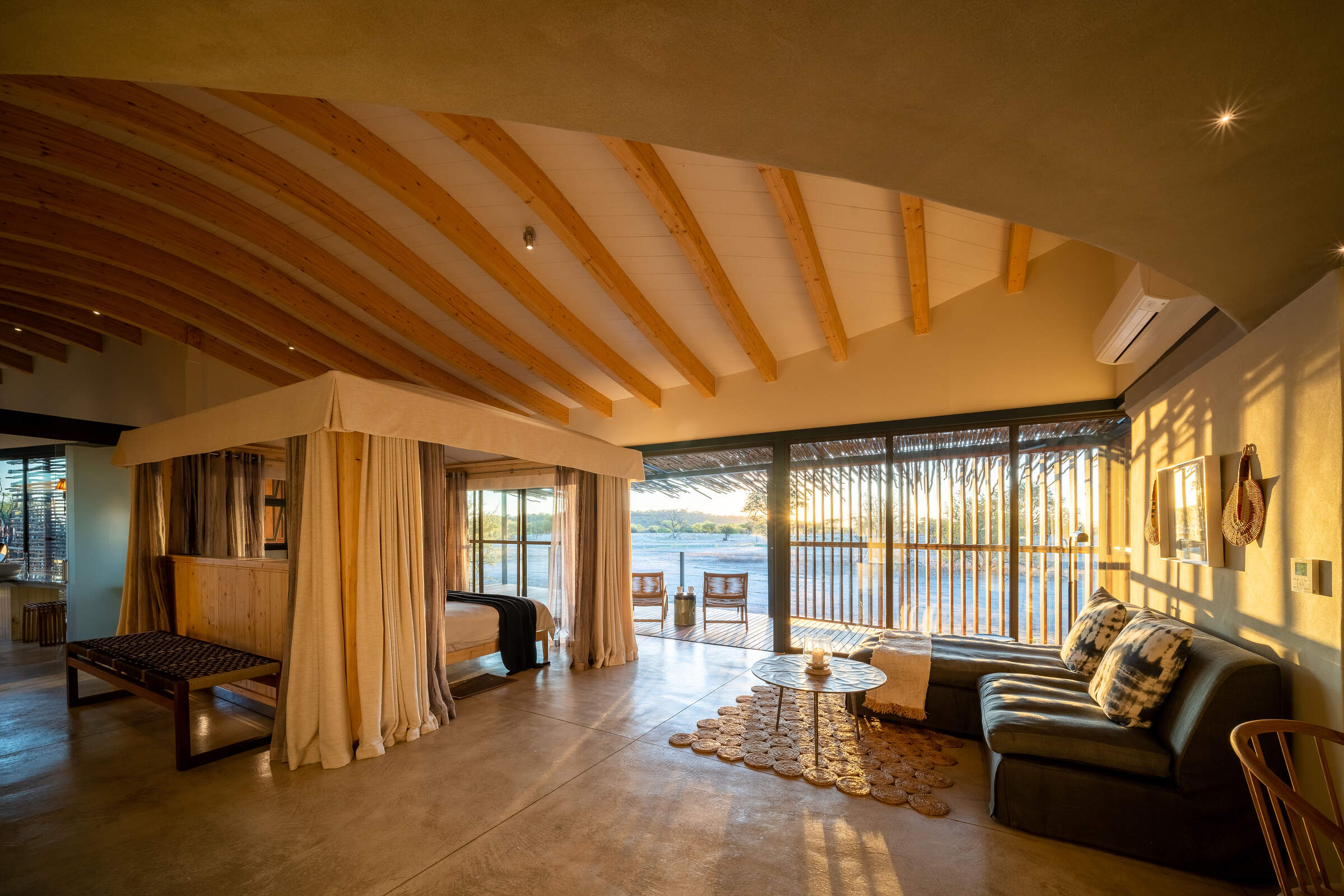
Andersson's at Ongava
With game drives on both its private reserve and in Etosha, Andersson's at Ongava also offers access to the Ongava Research Centre.
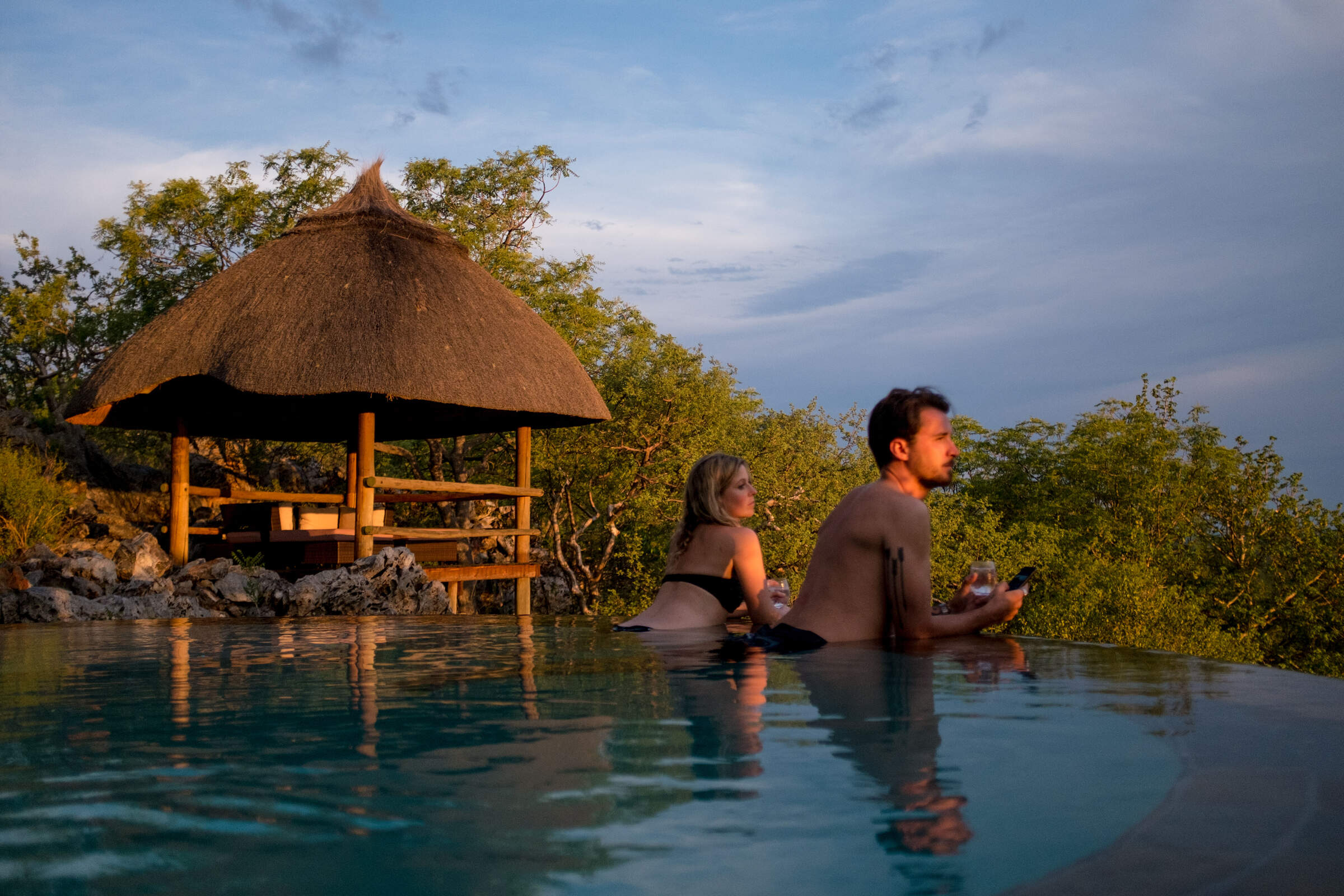
Little Ongava
The beautifully located and luxurious Little Ongava is a stunning place to stay in order to explore Etosha National Park and the private Ongava Reserve.
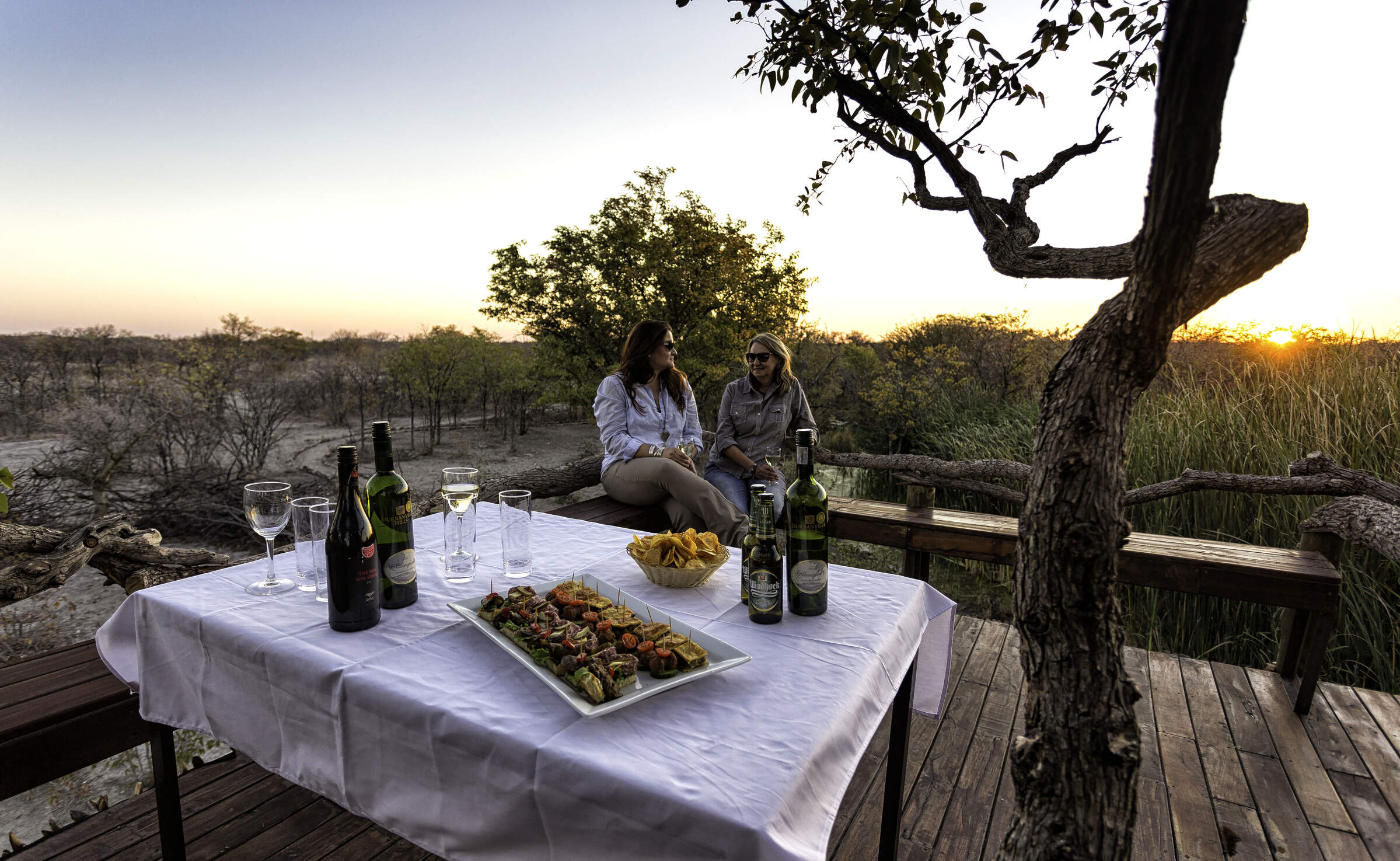
Taleni Etosha Village
Only 4km from Etosha's southern entrance, Taleni Etosha Village is an affordable base from which to explore the park.
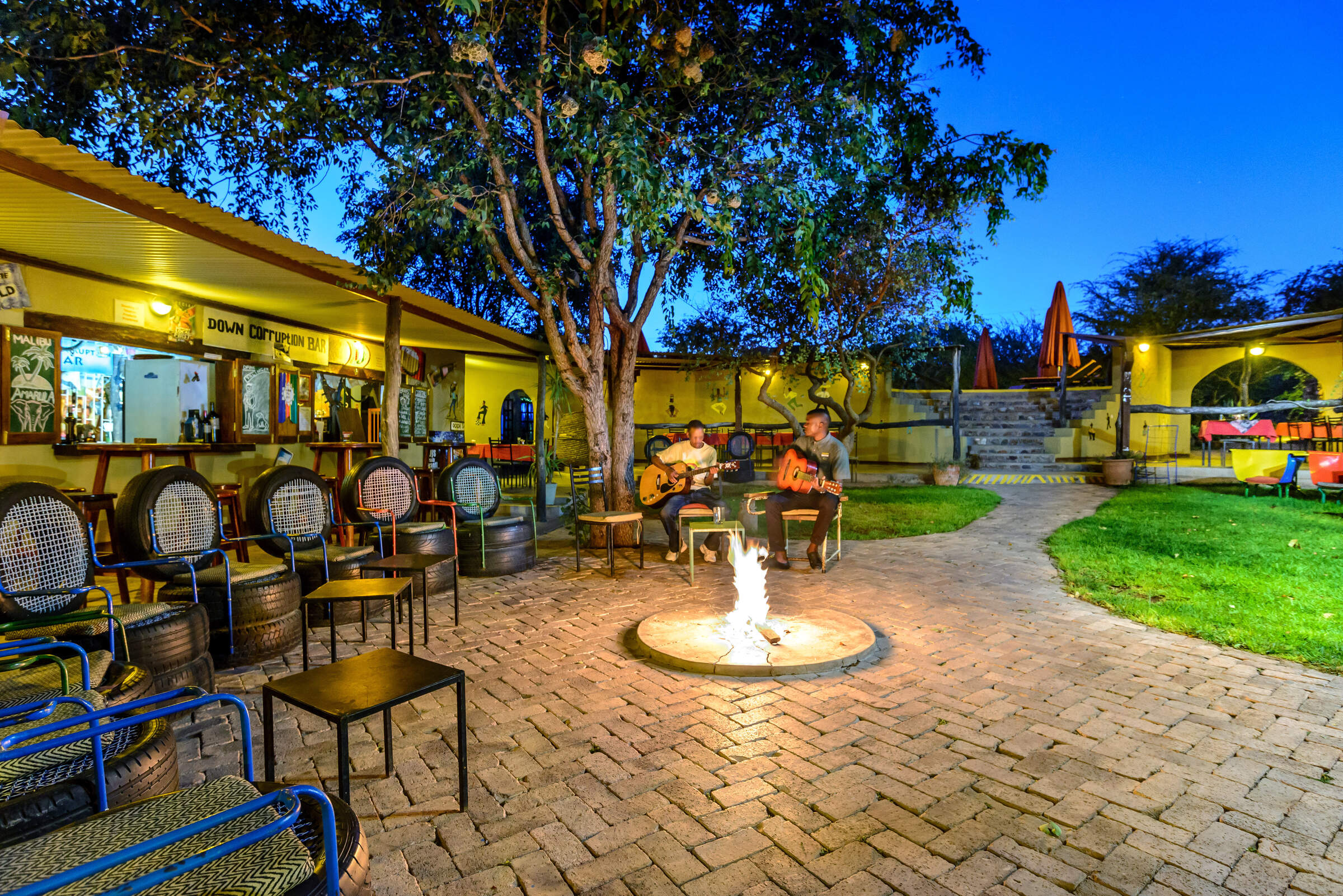
Etosha Safari Camp
Funky, low-key and very original, Etosha Safari Camp is well placed for visiting Etosha National Park on a self-drive or guided safari.
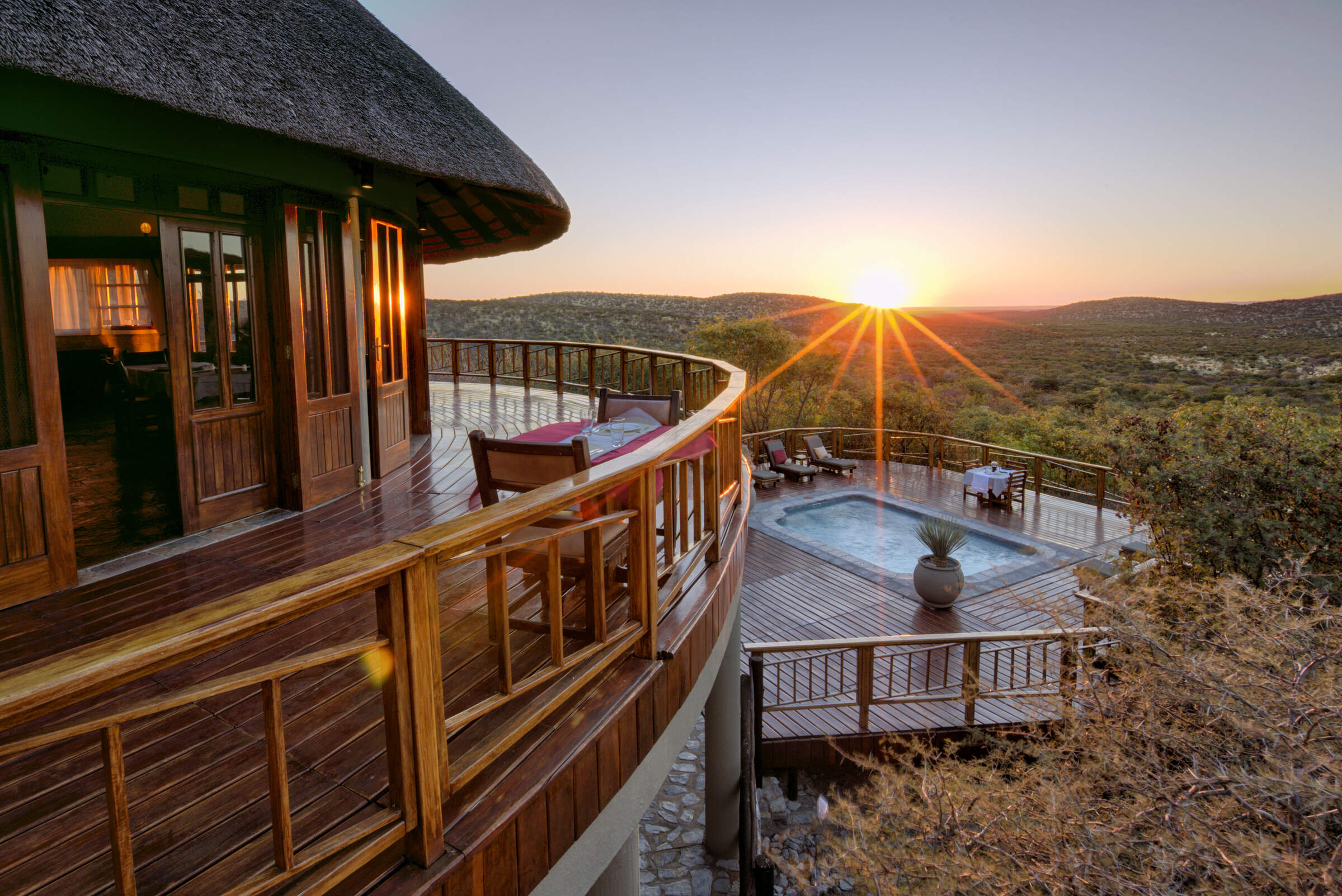
Mountain Lodge
In the heart of the private Etosha Heights Reserve, the family-friendly Mountain Lodge offers game drives and bush walks within an exclusive environment.
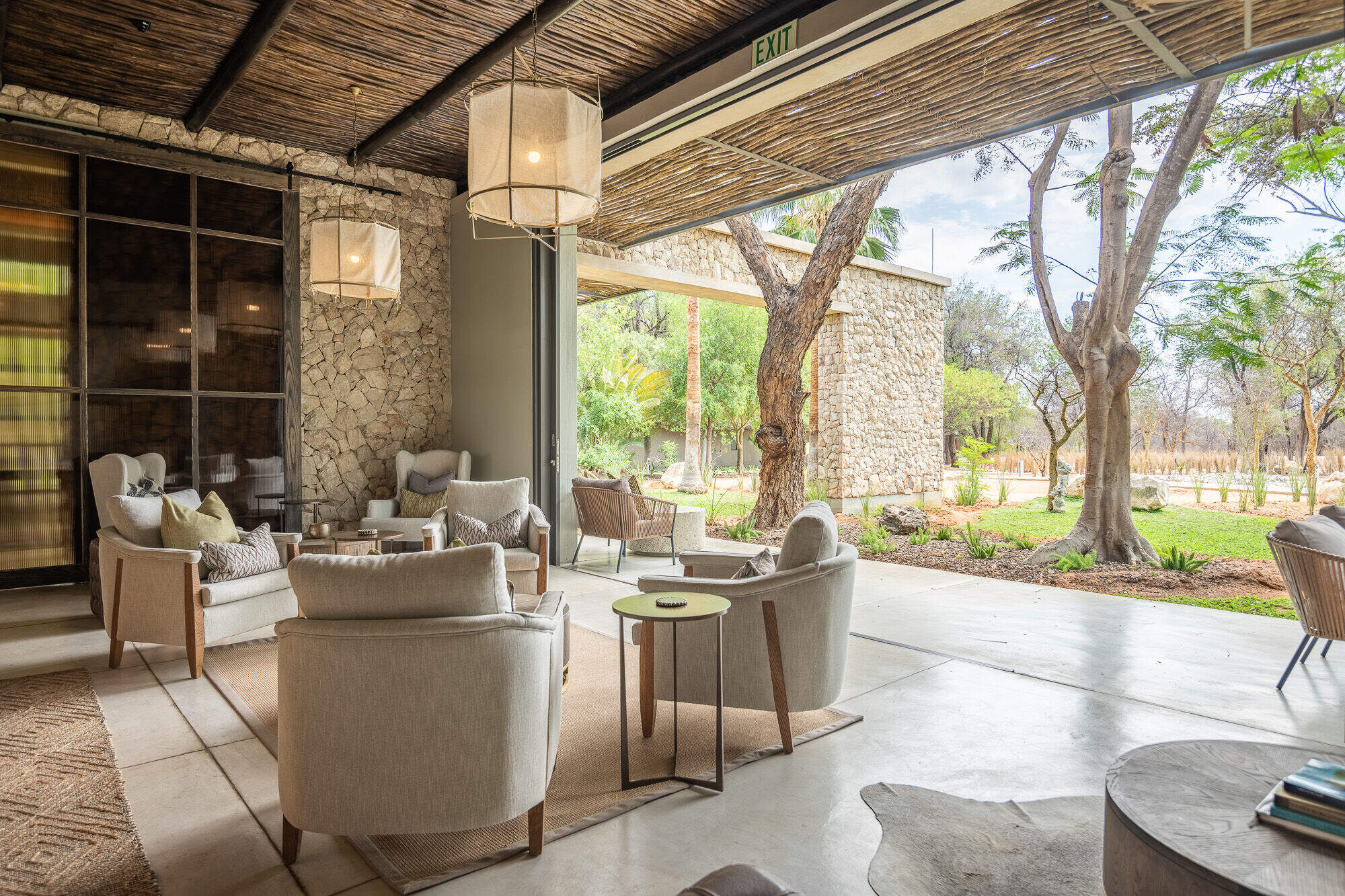
Mokuti Etosha Lodge
With 106 rooms, child-friendly Mokuti Etosha Lodge is more like a hotel than a lodge. Facilities to include a gym, spa, tennis courts and even a snake park.
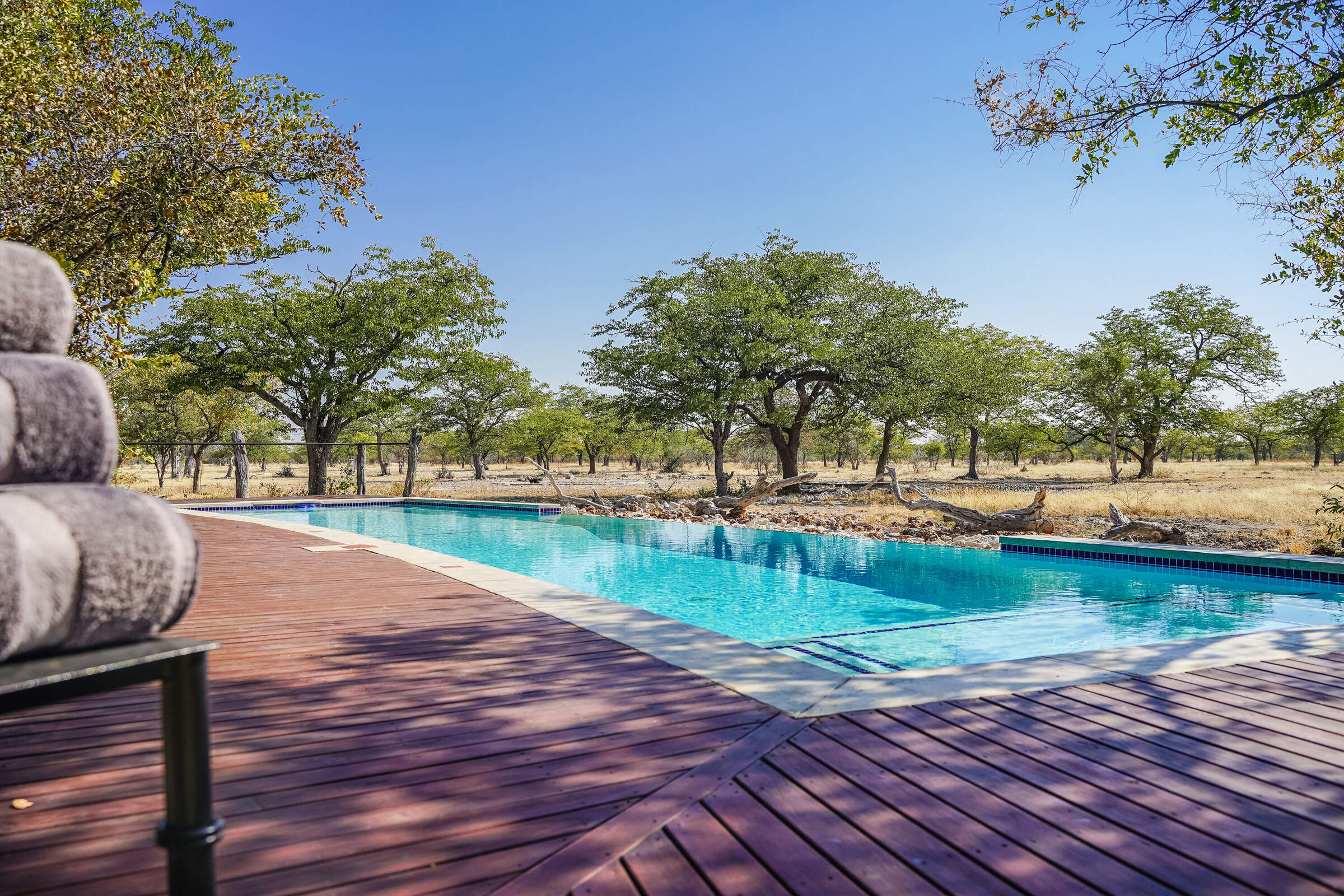
Etosha Oberland Lodge
A short drive from Etosha National Park's southern entrance, Etosha Oberland Lodge is a very comfortable base from which to explore the park, with excellent food.
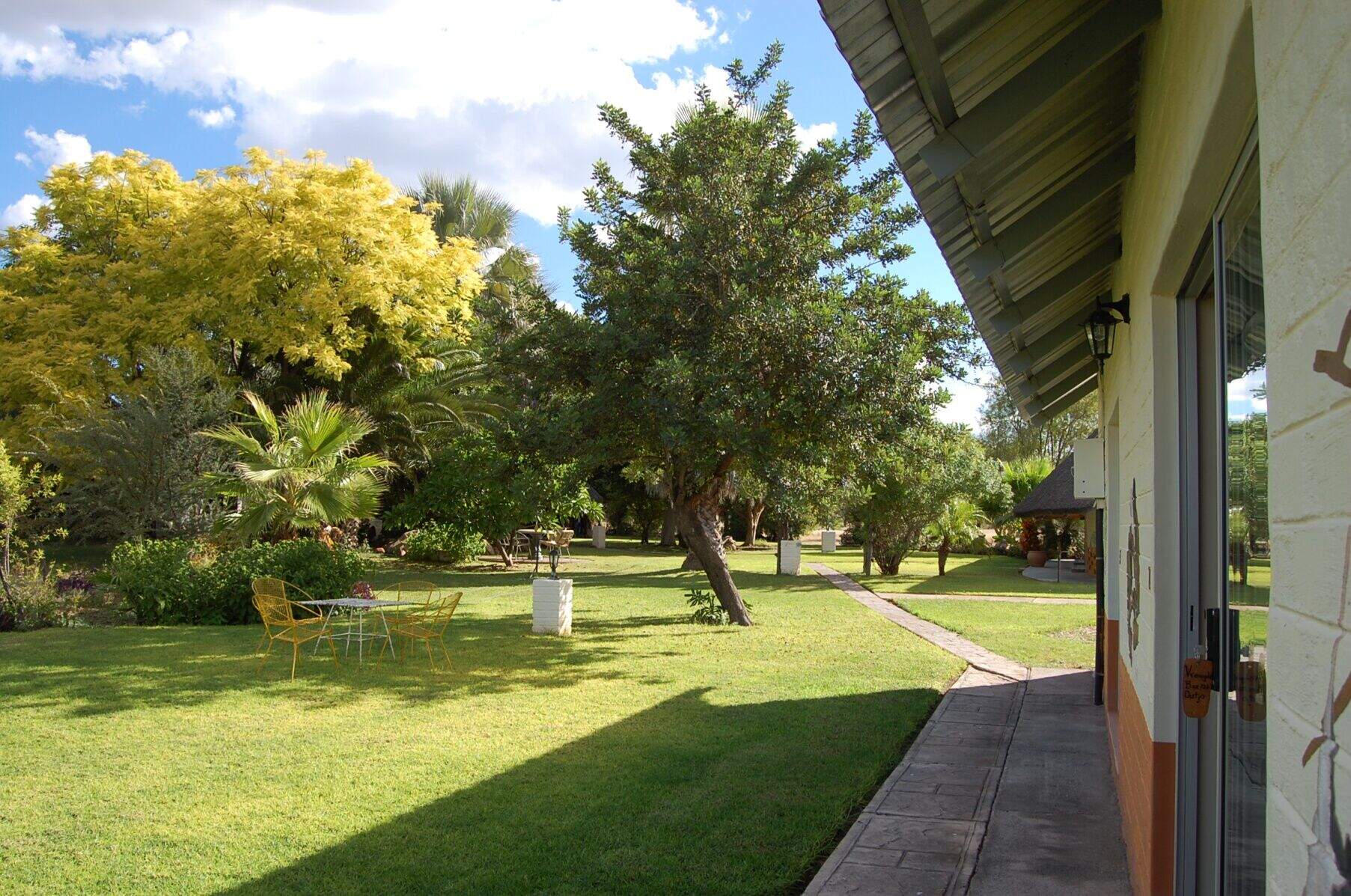
Vreugde Guest Farm
Vreugde Guest Farm is a delightful owner-run and working sheep farm where you can expect a warm welcome and charming hospitality.
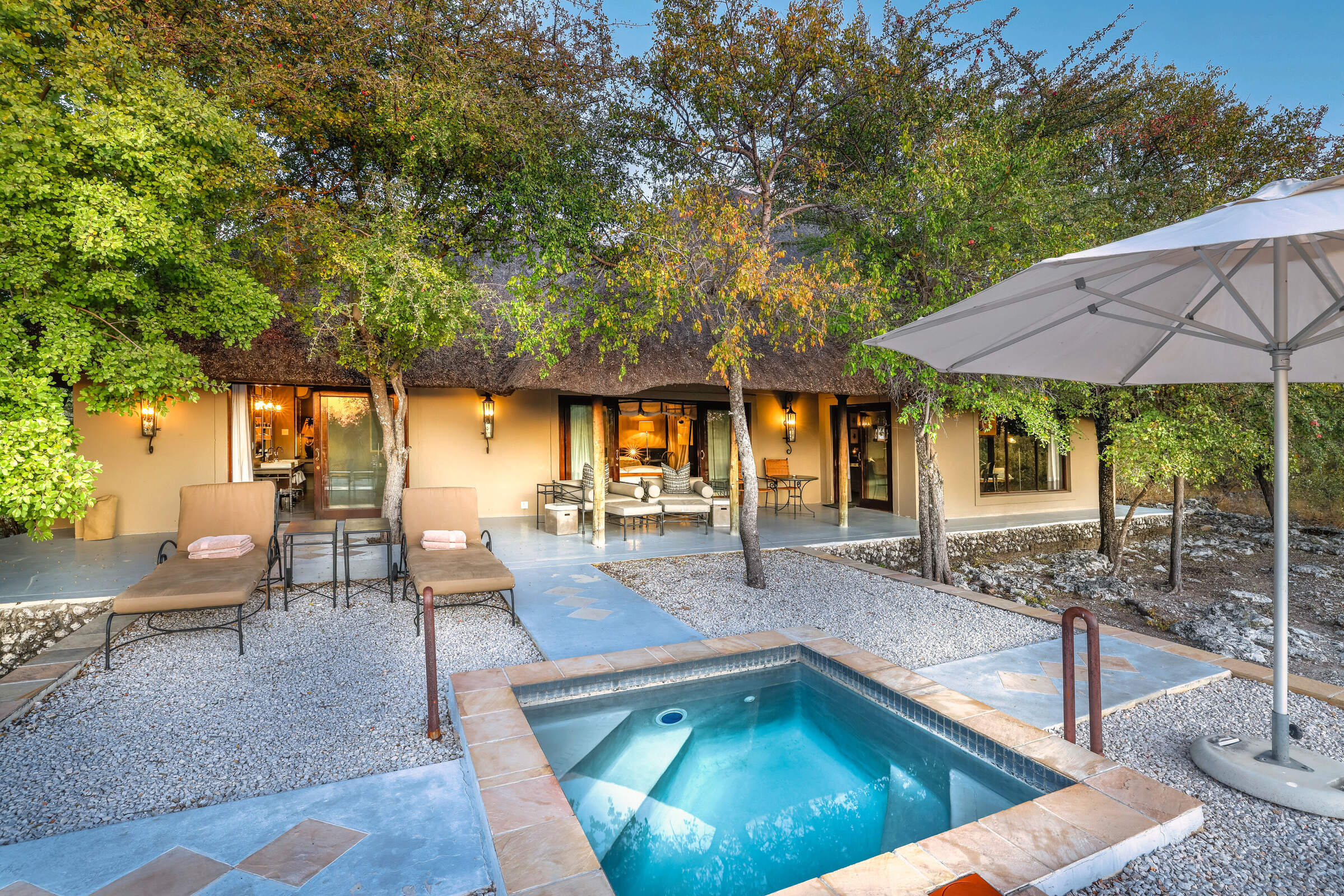
Villa Mushara
Offering luxury on a peaceful private reserve close to Etosha, Villa Mushara is a great choice for honeymooners & those wishing to indulge themselves.
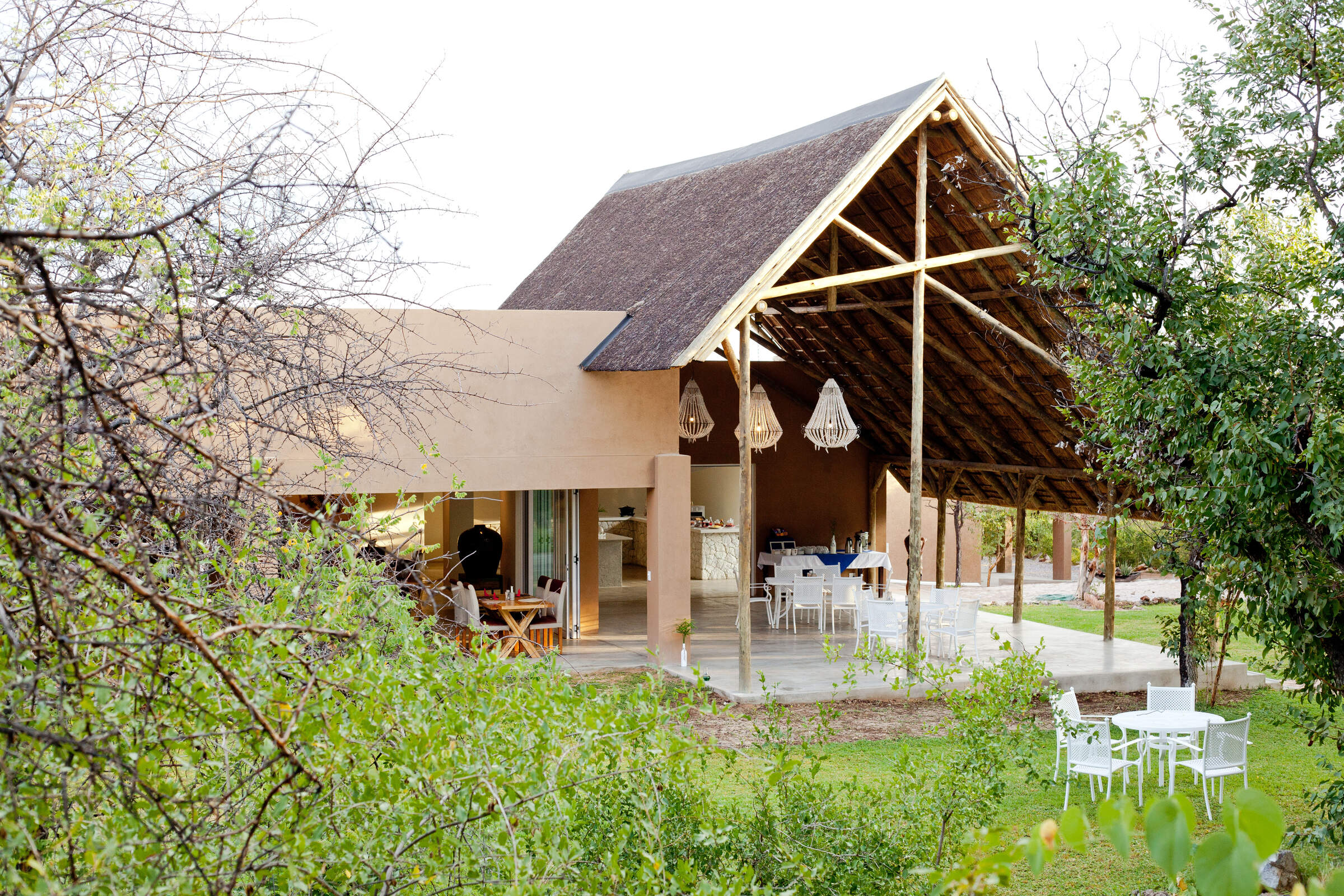
Toshari Lodge
Smart and professionally run, the hotel-style Toshari Lodge is well-placed for self-driving in Etosha National Park.
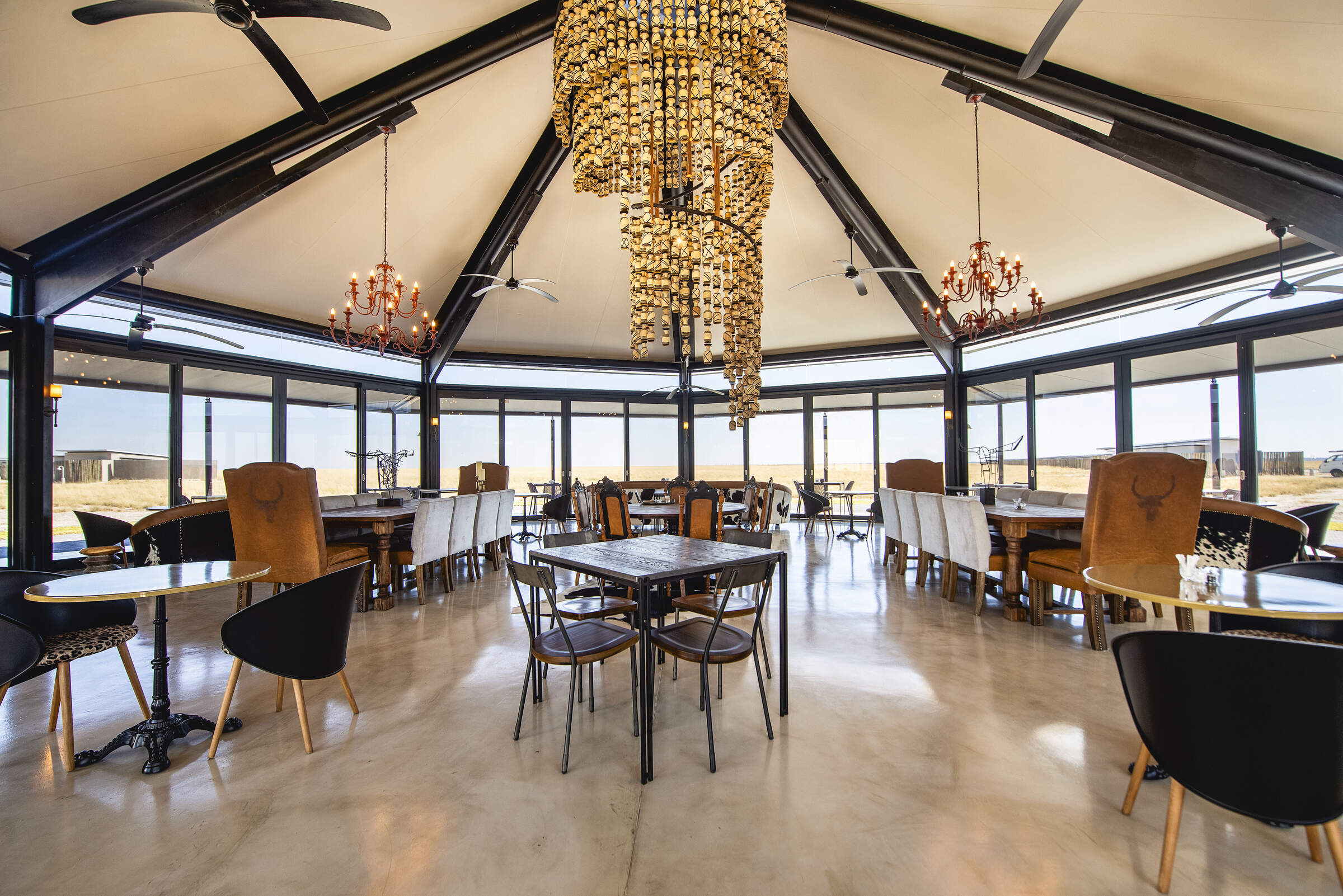
Etosha King Nehale
A short drive from the national park's northern entrance, Etosha King Nehale Lodge is an interesting and comfortable base from which to explore the park.
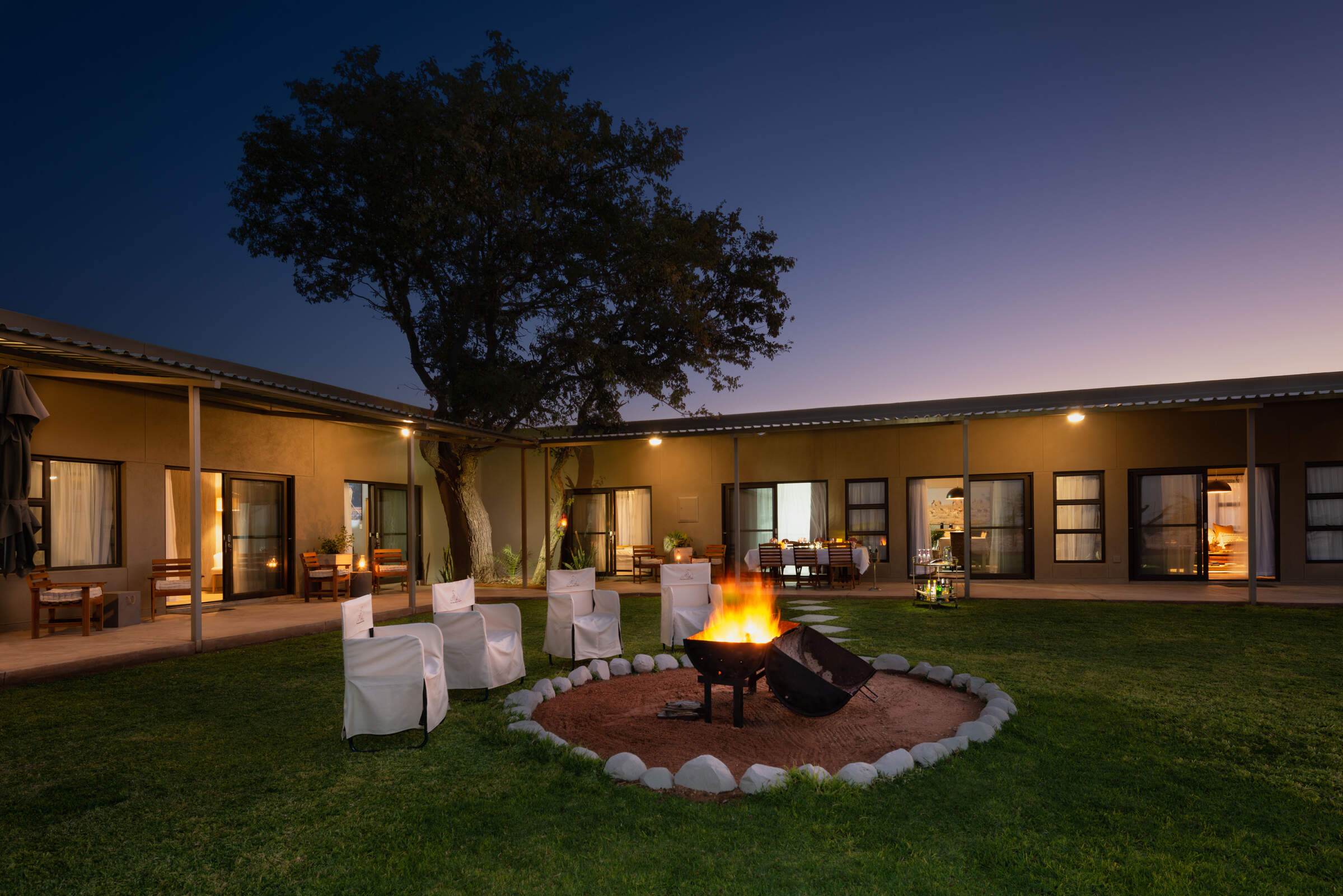
Safari House
The private Safari House on the Etosha Heights reserve is a great option families or friends travelling together.
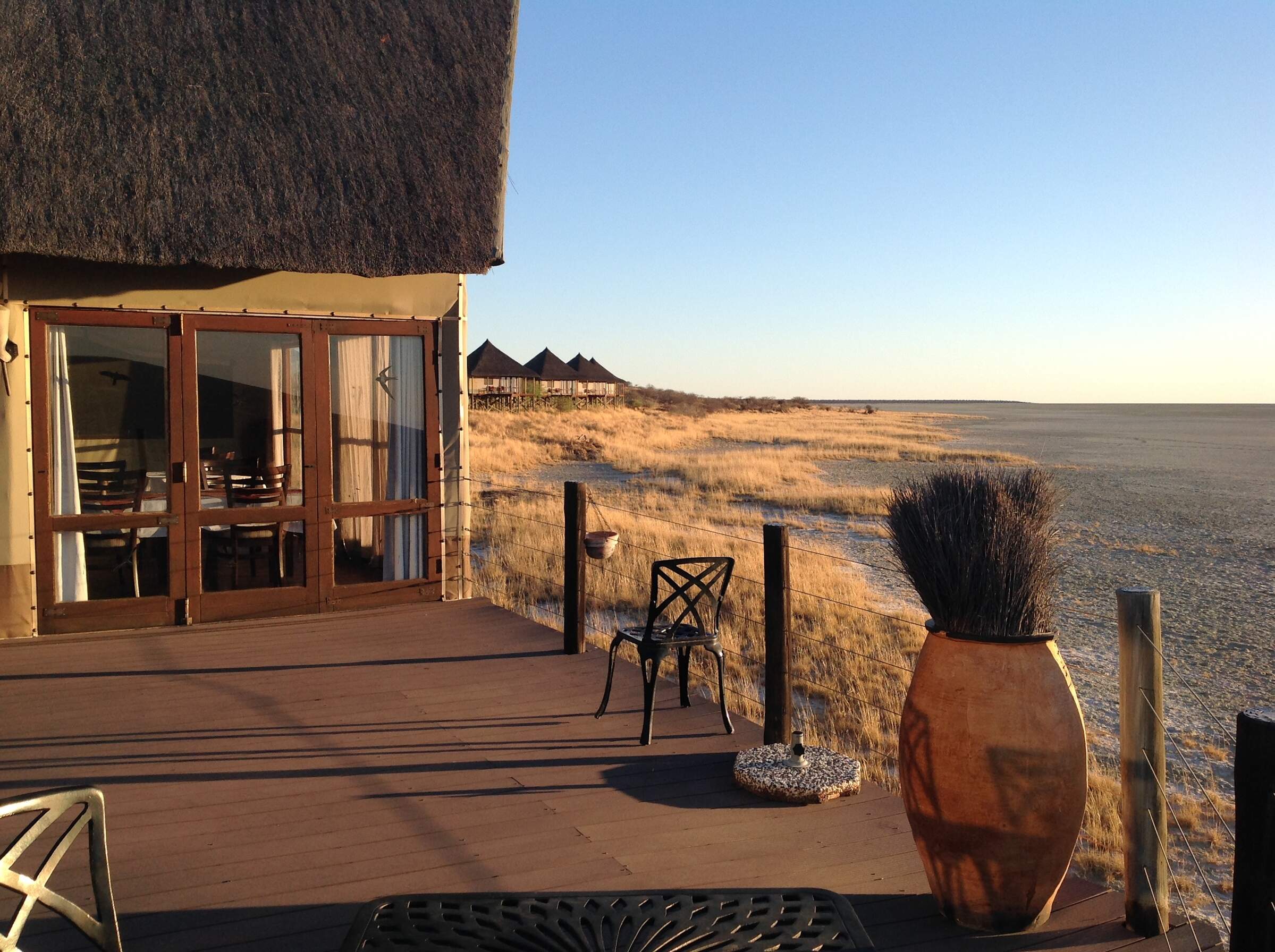
Onkoshi Camp
Onkoshi Camp is owned and run by Namibia Wildlife Resorts. Built on elevated wooden platforms it overlooks Etosha Pan.
When to go to Etosha National Park
Our month by month guide: What it's like to visit Onguma The Fort in Etosha National Park
Jan
Feb
Mar
Apr
May
Jun
Jul
Aug
Sep
Oct
Nov
Dec
Etosha National Park in January
January marks the start of Etosha's main rainy season. The Etosha Pan, usually a vast expanse of white clay, may partially fill with water in good rainy season, attracting flamingos and other migratory birds. The landscape transforms into a lush green oasis, providing ample food for wildlife. Many animals give birth during this time, offering chances to see newborns.
While game viewing can be challenging due to dispersed wildlife and thick vegetation, birdwatching is excellent. Migratory species arrive and birds display breeding plumage. The Okaukuejo and Halali waterholes remain active, though less crowded than in dry months. Visitors should be prepared for occasional thunderstorms and potentially muddy roads, especially around Fischer's Pan.
The vibrant greenery and the presence of young animals make this a fantastic time for photography.
- Variable weather: hot, dry or humid with rain
- Occasional localised thunderstorms in Etosha
- Many animals with young; spectacular birdlife
- Wildlife dispersed, harder to see in Etosha
- Fewer tourists; low rates at most lodges
Our view
This is not a great time to visit
Weather in January
Etosha National Park in February
February is typically Etosha's wettest month. The Etosha Pan may be partially filled, creating a spectacular sight and attracting numerous waterbirds, including flamingos. The landscape is vibrantly green, with many animals raising their young.
While game viewing can be more challenging due to the abundance of water and vegetation, patient observers can spot a variety of wildlife, and share their sightings with fewer other visitors. Birdwatching is excellent, with many species in breeding plumage. The Fairy Tale Forest near Okaukuejo is particularly lush during this time.
Visitors should be prepared for occasional thunderstorms and potentially challenging road conditions, especially in the eastern part of the park. The lush environment and the presence of young animals provide a unique opportunity to witness the park's life cycle.
- Variable weather with occasional thunderstorms
- Bush feels alive; birdlife at its peak in Etosha
- Wildlife in Etosha dispersed, harder to spot
- A variety of newborn and young wildlife to see
- Few tourists; lowest rates for accommodations
Our view
This is not a great time to visit
Weather in February
Etosha National Park in March
As Etosha's main rains taper off, March offers a mix of wet and dry days. The landscape remains green and alive, with insects and smaller animals more easily seen, and many birds and animals are finishing raising their young.
The Etosha Pan may still hold some water, attracting flamingos and other waterbirds. Game viewing improves as the month progresses and animals start to herd together at permanent water sources. The Okaukuejo, Halali, and Namutoni waterholes become increasingly active.
Birdwatching remains excellent, with many migrant species still around. The Dolomite Camp area in the west offers good chances to spot rarer antelope species like black-faced impala.
The transition from wet to dry conditions provides a fascinating glimpse into the park's seasonal changes.
- Weather variable; thunderstorms less frequent
- Animals well-fed after months of abundance
- Wildlife in Etosha still dispersed, harder to see
- Migrant birds prepare to leave the park
- Few visitors; rates often low at Etosha lodges
Our view
A good time to visit, with pros & cons
Weather in March
Etosha National Park in April
April typically sees dry weather dominating in Etosha, with decreasing chances of rain. The landscape remains relatively green, and animals are in excellent condition with shiny coats. Increasing numbers of elephants seen as the herds begin to use the permanent water sources. The Okaukuejo waterhole becomes particularly active, especially in the evenings.
Photographers benefit from clear air and lush, green backdrop. Night drives from camps like Halali offer chances to see nocturnal animals. Birdwatching remains good, though some migratory species begin to depart, and the Fischer's Pan area can still be productive for waterbirds if there's residual water from the rainy season.
The shift towards drier conditions improves the chances of wildlife sightings.
- Becoming drier and cooler, especially at night
- Few visitors except around Easter; low rates
- Wildlife in Etosha still relatively spread out
- Migrant birds have largely left the park
- Fresh air and often green landscapes in Etosha
Our view
A good time to visit, with pros & cons
Weather in April
Etosha National Park in May
May marks the transition to Etosha's dry season. The landscape starts to dry out, but may still retain some greenery. Wildlife increasingly gathers around permanent water sources, making game viewing more predictable. The Okaukuejo, Halali, and Namutoni waterholes become excellent spots for animal observation – especially when floodlit after dark. Night drives offer opportunities to see nocturnal species like leopards and owls.
The Etosha Pan is usually dry, creating a stark, shimmering backdrop for photography. Birdwatching remains good, with 340 different species recorded in the park. The western part of the park, accessible from Dolomite Camp, offers chances to see rarer species like black rhino in a less frequently explored environment. The dry season's onset brings a new rhythm to the park's wildlife dynamics.
- Lovely weather: dry, warm days & cool nights
- Etosha drying out; landscapes still partly green
- Fantastic air clarity; ideal for photography
- Visitor numbers low; lodge rates still low
- Wildlife starting to gather at Etosha waterholes
Our view
A very good time to visit
Weather in May
Etosha National Park in June
June brings cooler temperatures with clear skies to Etosha. The landscape is drying out, encouraging animals like elephants, rhino and giraffe to waterholes. This makes for excellent game viewing, especially at popular spots like Okaukuejo and Halali. Night drives on private Etosha reserves, like Ongava, are particularly productive.
The dry Etosha Pan creates mirages and a unique backdrop for photography, perhaps a lone ostrich crossing the stark salt crust. Birdwatching remains rewarding, with bright colours standing out in drier vegetation. The Namutoni area, with its fort, provides a mix of wildlife viewing and historical interest.
Cooler temperatures making walking safaris enjoyable in Etosha’s adjacent wildlife reserves, like Etosha Heights.
- Clear days, cold nights in Etosha National Park
- Great air quality; perfect for photographers
- Moderate lodge rates; shoulder season begins
- Wildlife gravitates to Etosha's waterholes
- Some greenery remains in parts of the park
Our view
A very good time to visit
Weather in June
Etosha National Park in July
July is prime time for wildlife viewing in Etosha as animals, in particular predators, are more active later in cool mornings and earlier in the afternoons. The dry landscape concentrates animals around waterholes, making for predictable and spectacular sightings. The Okaukuejo waterhole is particularly active, especially at night when black rhinos often visit and jostle for position with elephants.
The stark white Etosha Pan creates a unique backdrop for photography, with heat mirages shimmering on the horizon.
The dry season's peak offers unparalleled wildlife viewing opportunities. Game drives along the southern edge of the pan offer excellent opportunities to see large herds of zebra, wildebeest, and antelope. Birdwatching is rewarding around waterholes, with species like eagles and vultures frequently sighted.
- Dry days, crisp nights; excellent for stargazing
- European holidays begin; more families visit
- Peak season; high rates, lodges often full
- Fantastic wildlife watching
- Animals concentrate around Etosha waterholes
Our view
A very good time to visit
Weather in July
Etosha National Park in August
August is the height of the dry season in Etosha, offering excellent wildlife viewing opportunities. Animals concentrate around waterholes, with a variety of predators and prey often seen at any one time. Night viewing at the more secluded yet floodlit waterhole at Halali is often rewarded with sightings of shyer leopard and porcupine.
The dry season's intensity brings wildlife into sharp focus. The open plains along the edge of the Etosha Pan are good for seeing large herds of zebra and wildebeest, and often cheetah too. Predators often lie in wait for their prey near waterholes offering sightings of hunts to patient game viewers.
Birdwatching remains rewarding, with raptors like bateleur and martial eagles frequently sighted.
- Dry days, cold nights; clear skies in Etosha
- Busy by Namibian standards; family rooms full
- Peak season; high rates, advanced booking needed
- Excellent wildlife viewing in Etosha National Park
- Large herds gather at Etosha's waterholes
Our view
Fantastic: the very best time to visit
Weather in August
Etosha National Park in September
September offers peak wildlife viewing in Etosha. The extreme dry conditions concentrate animals around waterholes, making for spectacular sightings of multiple species. The Okaukuejo waterhole is particularly active, with elephants, rhinos, and lions frequently visiting.
The last months of the dry season showcases the park's wildlife at its most concentrated. The stark landscape of the dry Etosha Pan creates dramatic backdrops for photography. Game drives along the pan's edge offer chances to see large herds of zebra, springbok, and oryx as well as lion prides and cheetah. The western part of the park, accessible from Dolomite Camp, often provides a more exclusive safari experience with good rhino sightings. Night drives on adjacent private reserves like Hobatere offer opportunities to see nocturnal animals such as genets and aardwolves.
Birdwatching is excellent, with species standing out clearly in the sparse vegetation.
- One of the best months for Etosha wildlife viewing
- Warm days, cold nights; temperatures rising
- Colourful birds stand out against a starker backdrop
- Etosha's waterholes teem with diverse wildlife
- High season; book Etosha accommodations early
Our view
Fantastic: the very best time to visit
Weather in September
Etosha National Park in October
October is typically Etosha's hottest and driest month, offering excellent wildlife viewing. The intense heat and dry conditions heighten the drama of wildlife interactions.
Animals concentrate heavily around waterholes, with spectacular sightings common at Okaukuejo, Halali, and other permanent water sources. Patient photographers spending time at waterholes are richly rewarded. Large herds of zebra, wildebeest, and various antelope species can be seen along the pan's southern edge. Predator sightings, including lions and cheetahs, are frequent as they target gathered and weakened prey. Thinning vegetation at Namutoni makes it easier to spot the dimunitive Damara dik dik – Namibia’s smallest antelope.
Birdwatching remains rewarding, with raptors and colourful rollers often spotted.
- Peak wildlife-viewing month in Etosha National Park
- Hot and dry; Etosha feels like a desert
- Air can be hazy with dust in some areas
- Peak time; expect high season rates in Etosha
- Etosha lodges often full, especially early October
Our view
A very good time to visit
Weather in October
Etosha National Park in November
November marks the transition to Etosha's rainy season, bringing change to the landscape and wildlife behaviour. Early rains may green the vegetation, dispersing some wildlife from waterholes. However, game viewing remains good, especially around permanent water sources like Okaukuejo and Halali’s floodlit waterholes.
The first rains can create dramatic scenes as animals celebrate the water's arrival, with plains game often giving birth. Predators often give birth at this time too, to coincide with the time of plenty. Migratory birds begin to return, and birds take to the skies in spectacular aerial shows as they catch more active insects.
Seasonal wildflowers and dramatic, thundery skies add interest to photographic compositions. Summer rains bring reptiles such as tortoises and chameleons out into the open. The onset of rains brings a refreshing change to the park's ecosystem.
- Variable month in Etosha, depending on rains
- If rain comes, explosion of vegetation and life
- Baby animals often born around mid-month
- Shoulder season; mid-range rates offer value
- Showers more likely later in the month in Etosha
Our view
A good time to visit, with pros & cons
Weather in November
Etosha National Park in December
December is often a drier month before January sees the main rainy season begin. The landscape begins to show green from November's rain and the odd rainshower in December. Many animals have young, so there’s the chance to watch frolicking calfs and lambs.
The combination of rainfall and sunshine rejuvenates the park's landscapes and wildlife. While wildlife disperses away from the waterholes with increased water availability, game viewing remains good, especially on the open plains along the southern edge of Etosha Pan. Birdwatching is excellent, with many species in breeding plumage and displaying for mates as well as migrant species arriving.
Visitors should be prepared for occasional thunderstorms and potentially muddy roads, especially in the eastern part of the park.
- Hot, sometimes humid with cooling showers
- Landscapes green where rain has fallen in Etosha
- New life and energy in the park's ecosystem
- Excellent for birdwatchers in Etosha
- Larger animals may be harder to spot
Our view
This is not a great time to visit
Weather in December

Looking for inspiration on where to travel next?
Visit our trip chooser to explore your options and find inspiration for your perfect African adventure
Inspire me